Feeling stuck writing your IEPs? Download the 10 IEP Writing Commandments for FREE here!


STEM for Students with Special Needs: Part 1
STEM. We’ve all heard of it. Some of us are implementing it, while the other half of us have no idea what it means or what it is or how to even implement it… especially in a special needs classroom .
And some of us still have absolutely no idea what STEM stands for… that was me about a month ago.
Enter Brooke Brown . I met this amazing woman through TeachersPayTeachers and she forever changed my classroom and how I lesson plan for science… and math… and technology… and apparently I now teach engineering. Yes ya’ll, in a moderate to severe SPECIAL NEEDS CLASSROOM. I teach STEM.
Wow, that was pretty amazing to say. I teach STEM. AHH! It’s so exciting!

So what is STEM? Science, Technology, Engineering, Mathematics. But it’s so much more than just teaching those subjects and implementing them into our classrooms. It’s about the thought process and the higher order thinking that goes in to solving problems.

Why should we, special education teachers, teach STEM?
Because not only are we knocking out pretty much all subject areas at once, but we are allowing our students to problem solve and think critically. STEM gets my students collaborating in a high engagement, hands-on activity, all while using their smarts to generalize and apply this knowledge into the real world. Plus, STEM touches on multiple learning styles and intelligences!
It’s like walking into Target only to find out the Dollar Spot was just freshly stocked up. It’s like a gold mine!

Let me just say that special education teachers are pros at modifying stuff… and accommodating stuff. Everything really. We are kind of like lesson planning superheroes when it comes to taking a set general ed curriculum on a 4th grade level and morphing it to fit the needs of a student on a kindergarten level… and another student on a first grade level… and four more students on a second grade level. I mean, we’ve got it covered .
So what I’m going to do is show you two different STEM activities that we did this week. I’ll first show you the recommended way to try the activity, and then show you how I modified it to fit the needs of my students with special needs.
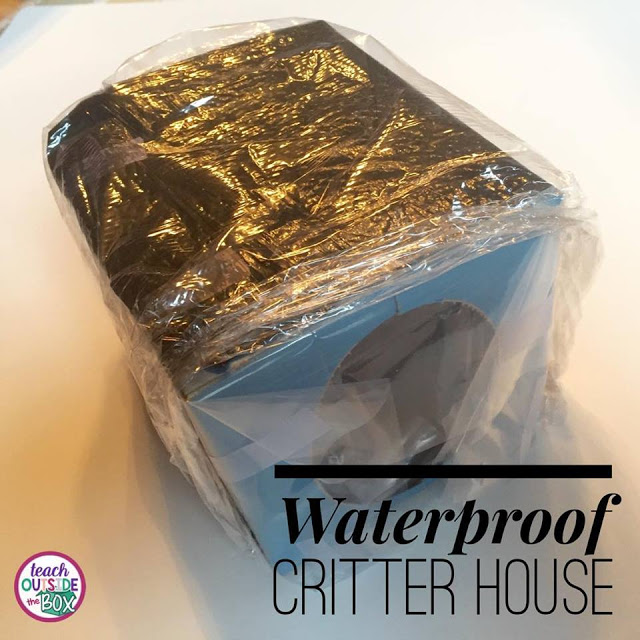
The first activity was building a waterproof house for a critter.
I didn’t have an empty tissue box to use for this activity, so I modified it a lot based on the supplies I had in my classroom.
To save time, I let my student choose clip art animals. He was so excited that I had dinosaur clip art too!

Then he had to cut out each animal and tape it on to a small dixie cup. Inside of each cup, we put a piece of sponge (I cut up a kitchen sponge I had left over from making glue sponges).

Since we tested 6 critter houses and not just one, I made him a super quick graphic organizer to keep track of his data on the back of the worksheet provided in the STEM packet.

Since we had 6 different critters, he had to build 6 critter houses. He used foil, a small baggie, a large baggie, cling wrap, Legos, and a plastic container.
We lined all of the critter houses up in front of our “pond.” I let him choose critter houses in any order he wanted. Then we set a timer for 1 minute and he had to hold the critter house under the water for 1 minute.
After the timer went off, he would pull the critter house out of the “pond” and deconstruct the house to see if the sponge got wet. If it got wet, he wrote “no” and if the sponge stayed dry, he wrote “yes.”

I would have guessed that the foil critter house would be waterproof…

…along with the Lego house… but I was wrong 🙂 LOL so it was a learning experience for me too!

The second STEM activity we did this week was building straw rockets.

This activity did not need modified for my student…

…but he did struggle a little bit with figuring out how to construct his rocket. This made it a great real life problem solving activity for him. He used the rocket “pocket” that I constructed as a model after a few minutes.
Then it was time to test out the rockets. He created 4 different rockets. We use two different straws: a small, thin straw and a longer, wider straw. So we trialed each straw twice.
He quickly realized that the larger, wider straw worked better to launch his rockets. He also learned really quickly that he needed to leave space at the top of the rocket for his air to blast the rocket off of his straw. He’s so smart!

One modification we used for this STEM activity was practicing measurement with nonstandard units of measure instead of using a ruler or a yardstick. He chose to use the ten frames to measure ( he said it was because they were the longest and it would go quicker… see what I mean? SO SMART ! )

We used the green tape on the floor as a baseline for him to begin his measurement.
We labeled each of his rockets and then measured them and recorded the data one by one.
After seeing how much fun we were having with straw rockets, the other students wanted to join in with us. So I made a fun game out of it.
I used red painter’s tape to tape numbers on the line ( as shown in the picture above ). They each got one rocket and four rounds. Whoever earned the most points after four rounds was the winner… although everyone got 3 M&M’s for participating, so we all won 🙂
The numbers are actually still on our classroom floor… 3 days after the lesson… and the kids are still exciting about their new “game.”

My friend also worked on this STEM activity with one of our paraprofessionals.

You could say that after two weeks of implementing STEM activities into my special needs classroom, I am hooked. My students are hooked… and the best part is, they WANT to do these activities!
You can find all of these activities in Brooke’s TPT store .
Read STEM for Students with Special Needs: Part 2 here .
Do you teach STEM in your classroom? Tell us in the comments below! *I was not compensated to write this blog post. The views within this post are strictly and honestly my own.*

YOU MAY ALSO LIKE:
- STEM in Special Ed: Part 2
- Prompting Hierarchy + Using Prompting Effectively

- Search Search
Success! Now check your email to confirm your subscription.
There was an error submitting your subscription. Please try again.
- Mrs D’s Corner Shop
- Teachers Pay Teachers
Get the Inside Scoop!

Simple STEM Activities for SPED Students

The STEM craze has swept the education world within the past few years. Students are becoming little engineers in their classrooms, putting together crazy cool buildings and systems, but what about our special education students? With fine motor issues, as well as difficulty with more “open-ended” activities, how can we provide STEM opportunities to our little loves in our special education classrooms without stressing them out?
I decided to create a small maker space area in our classroom to open up a door into some connecting and building activities to introduce my students to STEM. Really, my goal for this area has been to get my kiddos comfortable with manipulating different pieces, so we can build on those skills as the year goes on. I went to Oriental Trading to get a lot of the materials to start me off with. I chose materials that are easier to put together to give my students practice with putting different pieces together to build. I am not having them build anything specific, I have just been wanting to give them the opportunity to explore the different materials and become comfortable with items other than Legos (which are huge reinforcer for a lot of them).
Jumbo Pipe Connectors
So far, these are the favorite. I must admit I even enjoy sitting and building these connectors with my students.

Puzzle Shaped Block Set
Interlocking these puzzle pieces serves as great fine motor practice for my students. They also have to rotate the pieces to fit, so it does require a bit of thought. We love them!

Cool Crazy Connectors
These connectors are just as described in their name – cool and crazy. They are so much fun to build with!

Popsicle Sticks
Add some velcro and let them create! You can use these popsicle sticks to work on letters, numbers, shapes, and even 3d objects.

Easy Stick Blocks
There blocks are classic and do require some concentration to build them together. This little guy said he was building a chair.

Please note: While I did receive these item at no cost, all opinions in this post are 100% my own.
Do you prove STEM opportunities for your special education students? I would love to hear about them! I am always looking for new ideas.
Leave a Comment Cancel Reply
You must be logged in to post a comment.

Home / Teachers News / 7 easy STEM activities for students with developmental disabilities
7 easy STEM activities for students with developmental disabilities
- January 27, 2020

Teaching STEM is now a standard component of early childhood education, but do we pay enough attention to students with special needs?
Educational institutions – from traditional schools to home school programs – are recognising the value of early childhood STEM programs in teaching critical thinking, encouraging curiosity and fostering a love of collaborative learning and problem-solving.
However, as educators continue to build out their STEM offerings for younger children, it’s important they pay attention to the needs of students with developmental disabilities. All too often, students with disabilities find that STEM activities aren’t designed with enough consideration for their needs. That lack of consideration is an especially big loss considering that STEM-focussed activities can be especially stimulating and enjoyable for many students with disabilities and that disability-inclusive STEM education can have substantial benefits for childhood cognitive development.
Fortunately, incorporating STEM education for kids with disabilities doesn’t have to be difficult. If you’re an educator interested in creating fun and interesting STEM activities for younger children with developmental disabilities, try these seven easy and fun activities in your classroom. They’re designed to be accessible, interesting and rewarding for students of many different ability levels, and they help lay the foundations of logical and creative thinking that lead to a world of discovery.
1. Sticky-note matching numbers
A Post-It Number Match Game is a great way to teach basic math skills using a method that also provides the kinetic stimulation that many learners with disabilities need in their lessons. All you need for this activity are some markers, sticky notes, painter’s tape and butcher paper.
RELATED: The rise of cybersecurity education
Create a wall display with dots for each number, as well as a numeral on a sticky note to match. Then, hide the numbers around your classroom and send your kids on a hunt. Kids will love the accomplishment of finding each number, counting out the dots and applying each note to its spot! Best of all, the activity can be easily modified for identifying shapes, colours or any other learning goal.
2. Microscope activities
Microscopes are a classic way to get kids interested in the world around them, and starting with a student microscope kit will help introduce these important tools in a way that’s accessible for young children with disabilities.
Learning to manipulate the different parts of a microscope can be an excellent sensorimotor experience for students with disabilities and can help improve their confidence in operating STEM equipment, with many student microscope kits also coming with learning aids such as books, experiment cards and prepared slides. Finally, microscopes with digital cameras are also available that are great for guided learning exercises, as they make it easy for educators to display specimens on larger screens for easy viewing.
3. Popsicle stick builders
Experimenting, creating and building are all key parts of the STEM process, and popsicle stick builders can be an excellent way to get kids going on these key concepts. All you’ll need are a few velcro dots and a big bag of multicoloured popsicle sticks (also called craft sticks). Each dot should come as a pair with a hook and a loop side. Place one of each on each end of the craft stick and you’ve got a fun and versatile building toy great for building letters, numbers, shapes and anything else a child’s mind can dream up!
4. Classroom caterpillars or tadpoles
Classroom caterpillar or tadpole kits can be a great choice for STEM classrooms with students with disabilities. Watching and caring for a living creature as it grows and develops is a priceless STEM experience that can foster a lifelong love of life sciences. Students of all different ability levels will learn about the life cycles of the animals around us, and they’ll love watching the amazing transformation of caterpillars into butterflies or tadpoles into frogs. On top of that, these kits help teach responsibility and care for living things, which can benefit children’s social and emotional learning.
RELATED: 7 Benefits of inspiring STEM education in young girls
5. Easy stick blocks
With bristles that let them stick together on all four sides, these fun building blocks (also called bristle blocks) offer all kinds of building opportunities that other block toys don’t. They’re easy to stick together, but also require effort and concentration, so they can help students with disabilities learn to solve problems and work independently. Grab a big lot of them and let your learners’ imaginations run wild, or challenge them to build structures that support small objects in the classroom.
6. Solar UV Beads
A box of solar UV beads offers two activities in one — a creative exercise that children of different ability levels can do, plus an awesome demonstration of a key concept in STEM. Making jewellery with these clear white beads is a great fine motor skill activity that offers simple, creative fun, but the real enjoyment begins once you take them out in the sun. Kids will be amazed to watch the colours of the beads change when they’re exposed to sunlight, and it offers a great opportunity to show them the power of the sun and how natural forces can change the things around them.
7. Pattern Blocks
Recognising, matching and manipulating patterns is a key early skill for STEM learners of all ability levels, and pattern blocks are an accessible and fun pattern-teaching tool that has been used for decades. These brightly-coloured blocks are an early childhood classic that give children a dazzling array of shapes that they can rearrange to learn critical STEM concepts such as how parts come together to form a whole, shape symmetry and measurement. They’re also great for many different kinds of learning, from structured lessons in which learners work to imitate a design, to creative play exercises in which they make their own.
A disability-inclusive classroom is one in which all students are given opportunities to thrive, and inclusive STEM education is a key part of cognitive development for students with disabilities. With these easy and fun activities, educators can provide a range of appropriate STEM lessons that will ensure students with disabilities are included in the thrill of discovery.
Leave a Reply Cancel reply
Your email address will not be published. Required fields are marked *
This site uses Akismet to reduce spam. Learn how your comment data is processed .
Signup to our newsletter
Latest job kit.

Job Kit: Electrician
Stem role models.

Graduate site engineer

Sean Diprose
Senior insights analyst.

Steph Bagala
Marine scientist.

Kayla Chaoui
Site engineer.

Research shows the benefits of early STEM learning
STEM learning at a young age is not just about preparing children for specific fields, it also affects cognitive development.

New maths resource to help teachers – win for your school!
Get excited because this resource has been specifically designed to solve the two biggest problems that mathematics teachers in Victoria face today.

Australia’s top FREE student STEM careers guides. Discover careers and study paths combining STEM with your interests.

- Advertising
Sign up to receive inspiration, information and advice all about STEM study and careers straight to your inbox
Refraction Media acknowledge Traditional Owners of country throughout Australia and recognise their continuing connection to land, waters and culture. We pay our respects to their Elders past, present and emerging.
Copyright © 2023 Careers with STEM , All rights reserved. Christom


1 (844) 773-3822
How STEM Education Can Help Children With Special Needs
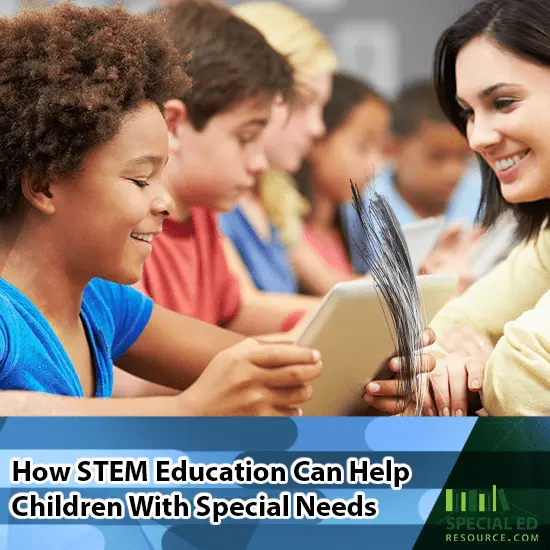
You walk into your child’s classroom, just hoping…
- He got along with his classmates.
- His work was completed in class.
- The teacher doesn’t want to sit you down to talk about behavioral issues again.
You are amazed to see him participating in a group activity rather than off to himself.
He is so attentive to the activity he doesn’t even notice you come in.
What could he possibly be doing that he enjoys so much?
He is building a bridge with straws, popsicle sticks, and legos during a STEM Education Activity.
He had a good day…
What is STEM Education?
- In simplified terms , STEM is an acronym that stands for Science, Technology, Engineering, and Mathematics.
- STEM Education is a curriculum of teaching that combines two or more of these together.
A more formal definition from Nancy Tsupros (Director of STEM Services at CMU):
“ STEM is an interdisciplinary approach to learning where rigorous academic concepts are coupled with real-world lessons as students apply science, technology, engineering, and mathematics in contexts that make connections between school, community, work, and the global enterprise enabling the development of STEM literacy and with it the ability to compete in the new economy.” (Tsupros, 2009)
Why is STEM Education Important?
Recent studies show many of the future careers are going to have some form of STEM integration. As a Special Education teacher, I went to a conference, and one of the sessions was on STEM Education.
STEM can mean something different to each teacher and how they integrate it into their classroom. PreK and Kindergarten students may be exposed to legos or building time during their day.
Unfortunately, in upper grades, students may not necessarily be exposed to any STEM opportunities.
If your children are interested in the following activities, they need STEM exposure:
- Video Games
- Architecture
- Construction Building
Benefits of STEM Integration
Creativity/Experimentation
- Students can create and use science, math, technology, and engineering in creative ways. Students also get to experiment and find a solution in their own unique way.
Creates an environment of Resilience
- Children need the opportunity to fail and know that they can try again. In many STEM activities at my conference, my group failed at the task. However, we were able to try again.
Team Building
- Many of the activities in STEM Education often require team building activities. In our middle school, they have a coding class in which the students have to work together to create a robot.
Encourages students to show off their prior knowledge.
- Many students use their prior experience when solving problems. STEM activities require students to use their prior knowledge while also using higher-order thinking to solve the problem.
How STEM Education Can Help Children with Special Needs
STEM education is an ongoing opportunity for students to use problem-solving skills and higher-level thinking in a fun way. Because most of the careers in the future will involve one of these subjects, it is essential to expose special needs children to STEM education.
A special needs child may be delayed in one subject like reading but be exceptional (and even gifted) in another like math. This is called Twice Exceptional . Participating in a subject he excels at will give him a sense of achievement that he doesn’t feel otherwise.
Not only are students with special needs capable of doing STEM activities, but they also enjoy them. And you know when a child enjoys something they will want to do it more.
Getting them to do educational activities is half the battle.
Taking part in the activities more often will help them retain what they learn.
Stem Activities to Try
Many of my current students LOVE Legos! Did you know that LEGOs often promote STEM? Legos are a great way to help students problem solve and use their higher-order thinking skills.
Lego Glasses
One of the activities that we learned about in the conference is giving students Lego Glasses within the first week of school. These special glasses allowed you to attach Legos to them.
The presenters discussed how students had to create their own pair of glasses based on their personalities. Letting students express themselves through Lego Glasses is incorporating STEM in a fun way.
One way that you can integrate STEM education is by using PlayDoh. PlayDoh allows children to use their imagination to create things. PlayDoh may not be cool in the upper grades though.
Building Things
Allowing children to use Lincoln Logs, popsicle sticks, and pipe cleaners to create and build things from scratch is another fun way to incorporate STEM education.
Here are a few other great resources for finding STEM activities:
- 50+ Hands-On STEM Activities for Learning
- 5 Best STEM Products for Kindergarten Students
- STEM for Students with Special Needs
Here are a few Special Education Resources specifically for math and science you can work on together at home.
- Strategies To Assist In Today’s Math
- 3 Incredible Science Strategies
- 4 Outside Of The Box Ideas For Children Struggling with Math
- Educational Resources Online
Is your child struggling in one of these areas?
We offer one-on-one special education tutoring that can be done from anywhere you are! Why? Because our special education experts conduct their sessions online!
Get started with a free consultation !
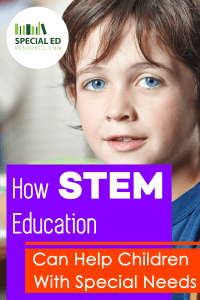
Taylor Fulcher
13 comments.
Wonderful article! I’m a fan of STEM!
Thank you for this helpful article on STEM education. My son has a speech delay and is very active. I can definitely see how this learning approach could be very helpful for him!
I never knew that this could be helpful. Thanks for the great info. It is definitely something to consider.
Thankfully our girls arent going through this yet. But if they do this is very helpful!
LOL you are preaching to the choir here! I love how STEM activities can integrate kids of all different levels and abilities into the same activity. My LD daughter is especially into building things with her Legos (for hours on end!), and is as obsessed with her music practice as she is with practicing math (which, of course, reinforce each other nicely). And they SO help with behavioral problems. too, you’re right! – LD daughter is doing much better this year now that she is at a Montessori school where there is a lot more hands-on learning like what you describe above.
I love this! And I think I’ll want a consultation for my son. Great post.
Thank you! I hope this article helps! We are ready for your call 🙂
Love this! STEM had made such a difference in our homeschool. Night and day difference!
What wonderful points. My husband was talking about possibly putting our daughter in a STEM school. I’ll have to look into it more.
Great post on STEM activities. It’s nice to know that it is a helpful tool for kids with special needs. I can see a child with ASD excelling at STEM activities and improving their behavior through those activities.
This a very informative article.. I am going to share in some of the mom groups I am part of.. Hoping it will come of help to mums and teachers alike. Thank you for sharing!
Thank you so much for this informative article. I love STEM toys and there are many good ones available today. I have gotten a few for my god daughter as she loves those types of toys and I love that they are having fun while learning at the same time 🙂
STEM definitely helps with sensory. I can see how it will help children with special needs. Thank you for sharing.
Leave a Reply Cancel Reply
Your email address will not be published. Required fields are marked *
Name *
Email *
Add Comment *
Save my name, email, and website in this browser for the next time I comment.
Post Comment

Our Services
- Special Education Tutoring
- IEP Consulting
- Special Needs Advocacy
- Home Schooling

Popular Articles
7 step iep process.
- Creative Writing Activities
- Activities to Help Kids Focus
- Self-Contained Classroom Defined
- 10 Benefits of Special Needs Tutoring
- What is an Orthopedic Impairment (OI)?
- 50+ Multisensory Math Activities and Games for Kids
- Multisensory Reading Strategies for Kids Struggling to Read
- What is Multisensory Learning: Benefits for Your Child
- Self Advocacy in Special Education Parent’s Guide
- 100 Creative Back to School Writing Prompts for Kids
Think Differently About Education. We Believe…

We assess your child’s learning style, personality, and interests to pair them with the ideal special ed tutor based on their individual needs.

Through technology and one on one learning, their future path to success can be made clear again.
Are you ready to see confident progress in your child?
Get started with a no-obligation consultation today!

There are hundreds of resources found on our website, SpecialEdResource.com, and on our YouTube channel that were created to help parents JUST LIKE YOU understand the cryptic language of special education.
Important Links
Copyright © 2024 SpecialEd Resource – Design by DeskTeam36 0
- Terms & Conditions
- Privacy Policy
Special Needs for SPECIAL KIDS
Stem activities in a special ed classroom or for distance learning.
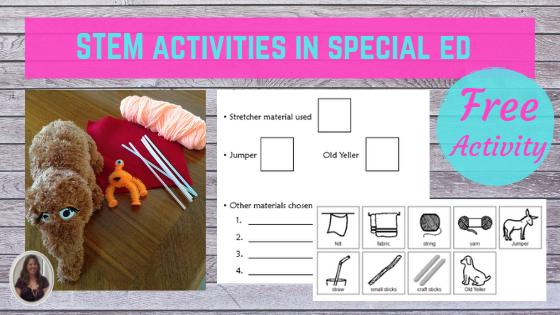
- July 8, 2019
- Teaching Tips
Whether you will be in the classroom directly teaching your students, or if you will be online doing distance learning, then adding STEM activities is a great way to keep students engaged and doing higher level tasks. With the right support and objects easily found around the house, ALL students can complete this free STEM challenge!! (see button at bottom of post). Plus, you can use this structure to come up with some of your own!!
You see it everywhere, STEM activities and project based learning. But if you teach in a classroom with students who have significant intellectual, fine motor, gross motor, communication, and behavioral challenges, you may be thinking it isn’t for you. BUT, with the right support in place your students can participate in these activities in a meaningful way that will keep them engaged and excited about the material.
So, let’s think about the supports we can put in place:
- Visual structure
- Peer support
- Conducting the experiment
- Social/communication support
- Sharing the finished product
1. Visual support
As with most activities in classrooms that serve students with significant challenges, there is a heavy emphasis on adding visual structure as a main support. This can be challenging when it comes to using a main-streamed regular ed activity like a STEM activity. But, it can be done. And, after you do it once, it will be easier to repeat the process with similar tasks.
The first thing to do is to is add some structure when it comes to choosing supplies for the project. Take pictures or use symbols for the materials students will have to choose from.
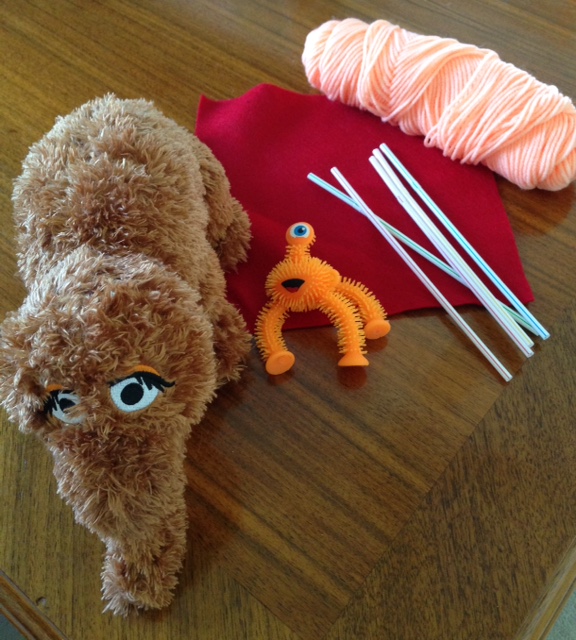
2. Peer support
Forming teams of students is great opportunity to capitalize on certain strengths individual students have. Making sure there is a student with strong fine motor skills in each group is helpful. It is also good to balance communication skills and behavioral challenges.
In the end, it is always better to have another classmate or peer help a student with specific challenges than have an adult step in.
With all the changes coming due to the Corona virus, I know this may not be a likely component. However, if you are doing these at home or as distance learning, then getting siblings involved as helpers is a great idea!!
3. Conducting the experiment
So, here is the thing, doing STEM with these kiddos can get pretty interesting and messy. But, I really encourage you to let it flow and give students as much independence and control over the process as possible. Having an amazing looking product at the end that adults had a heavy hand in creating, means very little to the students or to the parents who are entrusting you to guide and support their kids.
If students are truly struggling, ask lots of questions . Give students many choices so they are able to control as much as possible the flow of the STEM activity. The end product may look NOTHING like you expected. But, really, it is so much more about the process then the end product.
Finally, the more you incorporate this type of activity into your lessons, the better your students will get at it. In the beginning, it may feel like they have not gotten much out of it at all. It may feel like it was lot of work for nothing. (I know. I was in that exact same spot for many months. But, by mid-year, I could look back and see definite growth.) By using the SAME format, students were able to master different parts every time. So, at first, I may have ended up with literally a pile of supplies with no obvious purpose. But with time, it started to slowly change into a more meaningful placement of materials in that pile, and eventually became something we could all recognize as a finished product .
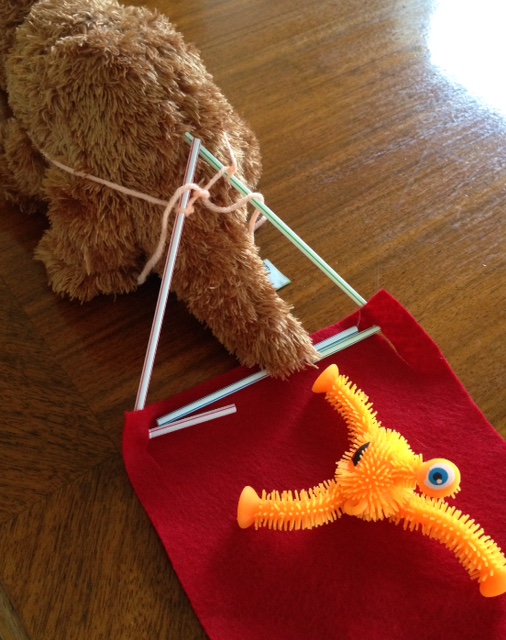
4. Supporting social interactions
One of the best things about STEM activities is giving students a chance to collaborate and work together . This often does not happen naturally or unsupported in many of our classrooms. Luckily, with a few critical changes, you can support this interaction in a way that encourages independence and true social interactions.
I like to purposefully call them a team , and have students record their names as team members. This may seem overly simplistic or obvious, but in our classrooms, the team is often made up of, or led by, adults. This activity, as much as possible, is student led and student supported. So declaring them a “team” and having the students record that is surprisingly powerful.
The next thing is to give students some structure to recognize and evaluate any problems that come up in the process. By having a space to specifically record any problems, acknowledges that there are likely issues that will happen, and they will happen to almost every team.
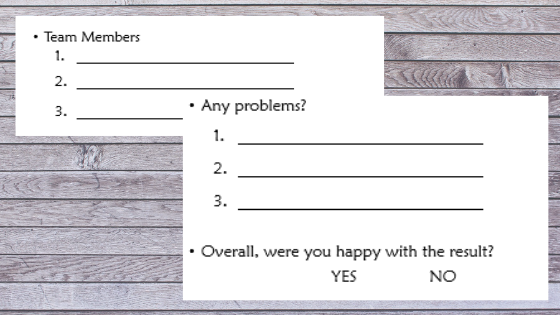
5. Sharing their finished product
The last thing I feel is super important is giving students a chance to share with others their finished product and how the process went. Allowing students to use their communication mode of choice is powerful, and with the right support, you will see that twinkle in their eye that tells you it was all worth the extra effort.
Want to give it a try? Click on the button below to download a FREE STEM activity that comes from my Old Yeller Novel Unit. It pairs well with Chapter 10, as Travis tries to create a stretcher to pull Old Yeller behind his donkey, Jumper.
To download this free STEM activity click the button below.

To check out my novel unit on Old Yeller, click HERE .

If you are looking for more fun ways to do science at home or in the classroom, be sure to check out my post on the scientific method!! It has a free experiment you can download and complete using things I know you have around the house!! Click HERE to head there now.
One Comment
Pingback: Teaching the Scientific Method in a special education setting - Special Needs for Special Kids
Comments are closed.
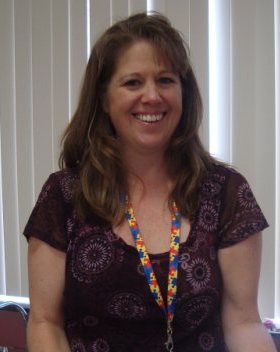
I'M CHRISTA JOY MY MISSION IS TO GIVE PARENTS AND TEACHERS THE TOOLS THEY NEED IN ORDER TO FEEL EFFECTIVE AND CONFIDENT TEACHING EVEN THE MOST CHALLENGING OF STUDENTS.
Free Worksheet Wednesday
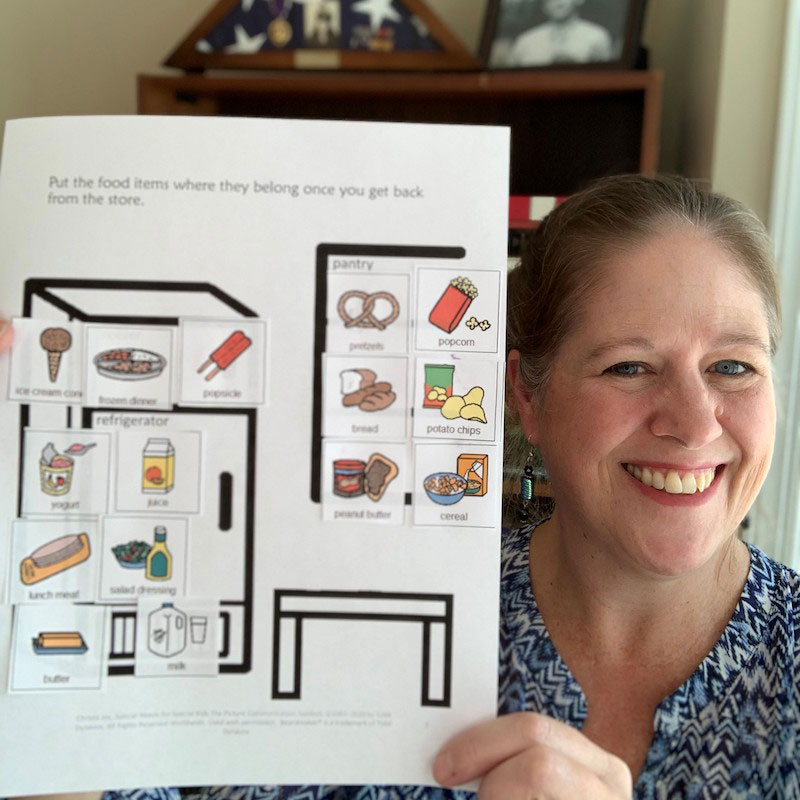

- STEM By Design / STEM for All Students
STEM Classes and Kids with Special Needs
by Anne Jolly · Published 02/17/2016 · Updated 11/17/2019
A MiddleWeb Blog

Did you know? Many students with special needs actually lean toward STEM fields in higher numbers than other students. According to a STEM 3 Academy report, about 34% of kids with autism spectrum disorders gravitate to courses and careers involving science, technology, engineering and math. That contrasts with 20% of students in the general school population.
These students often have prolific visual discrimination and pattern recognition skills, plus a single-minded ability to concentrate for extended periods of time and successfully engage in repetitive activities.
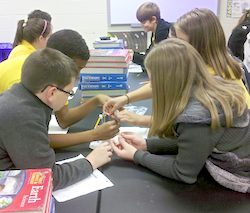
- Regular movement. STEM classes depend on active, hands-on engagement to solve real world problems. Opportunities for purposeful movement abound.
- Shorter class times . Actually, STEM class time is not shorter; however, there are built-in stopping and starting points as students move through the engineering design process. This provides breaks and time for kids to process what they are learning and doing.
- Smaller classes . Teams of 4 to 6 students are the norm for well-designed STEM classes. While the class may contain a normal number of students, kids work primarily in small group settings.
- Respectful, understanding environments . STEM classes are safe spaces. If a team fails to create a workable solution for a problem, no sweat. It’s just a normal step in improving the design and succeeding. Ideally, team members show respect and accept one another, and teachers monitor teams as they work to see that this is happening.
- Flexible teaching styles . STEM is the ultimate exercise in teaching flexibility. Project-based learning and inquiry approaches drive student learning.
Think about it – what students would no t benefit from those built-in STEM “accommodations?” STEM is a win-win situation for students with special needs and their friends.
Special Needs Teaching Strategies
How can STEM teachers prepare for and teach students with special needs? Here’s a brief, how-to list of strategies that can actually be valuable for all students.
- Assume competency . Believe that students with special needs can learn at higher levels and that you can create an environment to help them do that.
- Build on students’ strengths and interests . Leverage their strong points to increase their comfort and excitement about learning.
- Use a “ flow learning ” approach . Clearly define the purpose of their STEM challenge. Set the challenge level high and make sure your students with special needs will have opportunities to be successful with that challenge. Provide clear and immediate feedback so they can change and adapt as needed.
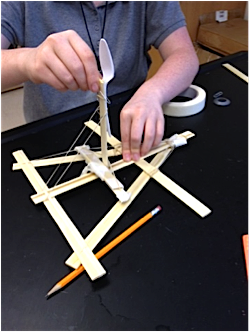
- Focus on safety consideration Be especially alert for safety issues when students are working with equipment to design devices for solving their problem.
- Model persistence, communication, creativity, and collaboration . These qualities are especially useful to kids with special needs who may need help with social skills.
- Establish collaborative student teams . That’s a tall order but stick with it all year. Be intentional. Help students understand that respect and inclusiveness are non-negotiable behaviors for all teams. Teammates honor one another’s strengths and accept each other’s differences. Give them specific strategies for showing respect through speech and actions. Teamwork allows special students to practice social skills they will need throughout life.
Special Needs Challenges
By now you know that teaching any group of students is both rewarding and challenging. Approach your students with special needs with high expectations, but don’t adopt a Pollyanna mindset. You’ll encounter plenty of challenges. For some students, the science and math content may be beyond their current learning level. The pace of the lesson may be difficult for some to keep up. Some students will want to work alone instead of in teams.

Get to know your students with special needs. Work together with their special education teachers and learn as much as you can about their strengths and difficulties. You’ll find many ways to make reasonable accommodations.
You might use images and graphics to make handouts clearer, headphones for those distracted by noise, a break zone or a quiet space, and technology that enlarges print. Your special education teaching colleagues will be your most valuable resource as you plan for and include these students in your STEM lessons.
The unique design of STEM lessons allows students, regardless of disability, access to the real-life learning experiences. Give these students with special needs STEM experiences to help them get ready for a future society where all types of people live and work together seamlessly.
This post provided a quick overview of a vitally important topic. You might want to learn more by examining these resources. Please share additional resources and tips in the Comments section.
- National UDL Center: Alternatives for STEM Visual Information
- Inclusive Education in STEM
- Makerspaces for Students with Special Needs
- Special Needs and STEM
Share this:
Tags: accommodations anne jolly disabilities environment special education teachers STEM STEM By Design students with special needs
Anne Jolly began her career as a lab scientist, caught the science teaching bug and was recognized as an Alabama Teacher of the Year during her long career as a middle grades science teacher. From 2007-2014 Anne was part of an NSF-funded team that developed middle grades STEM curriculum modules and teacher PD. In 2020-2021 Anne teamed with Flight Works Alabama to develop a workforce-friendly middle school curriculum and is now working on an elementary version. Her book STEM By Design: Strategies & Activities for Grades 4-8 is published by Routledge/EOE in partnership with MiddleWeb.
4 Responses
- Pingbacks 0
I am Bob Claymier, a retired 6th grade science and math teacher from Ohio, and i am an elementary STEM consultant for the Ohio Technology and Engineering Educators Association (www.oteea.org). I do my own consulting on integrating STEM into the elementary curriculum as well. My website, http://www.stemiselementary.com , has K-6 lessons correlated to the Ohio and NGSS science standards, and a list of elementary resources. I also publish a free monthly elementary STEM newsletter, also available on my site.
I really like your blogs. They are concise, easy to read and understand and right on target.
I would like to include your book for grades 4-8 in my list of elementary resources. i will also make mention of your work in my next newsletter and send you a copy.
I would like to ask if you could send me a complimentary copy of your book. i do presentations at STEM and science conferences throughout my area and always like to show participants the actual resource I am describing so they can really see and hold it. I’m sure the participants of my sessions would be very interested in your book. I plan on presenting at Bowling Green State University, the University of Cincinnati, the ASEE conference in Columbus and in Cleveland next year.
Thanks for all you do to support elementary STEM!
I’d love to find a STEM program for my differently wired son, 13. He can’t learn by rote but is jumping over mountains like molehills if he’s taught in his passion. I’ll relocate anywhere if I can find something. Any ideas? Thank you.
Hi, Maryrose. We’ve sent you an email.
Hello. I work for TERC, a non profit dedicated to STEM education. I’m also the mother of a child with a mild intellectual disability. I’m looking for learners with intellectual disabilities (or their caregives) interested in sharing a story about their experience in STEM… a great love of a topic, career or job aspirations in STEM, interest or experiences in STEM programs. Any suggestions? There is not much out there about ID and STEM… generally autism/ADHD/physical disabilities and access. Best, Kelly
Leave a Reply Cancel reply
Your email address will not be published. Required fields are marked *
Notify me of follow-up comments by email.
Notify me of new posts by email.
This site uses Akismet to reduce spam. Learn how your comment data is processed .
- Popular Posts
- Recent Posts
- Recent Comments

Book Reviews / Writing
Engaging All Students with Imaginative Writing

Articles / Literacy
2 Questions Help Move Kids Deeper into Texts

Articles / Mathematics
Do Less This Year to Let Kids Do More in Math

Book Reviews / Teaching Insights
Reflections on Teachers’ Life-Shaping Power

Articles / Coteaching
How to Create a Co-Teaching Power Zone

Artificial Intelligence / New Teacher Tips
What Will You Teach Your Students About AI?

Book Reviews / mathematics
Engage All Students with Offbeat Math Problems

First Days of Math Class / Meaningful Math
Low Prep Math Activities to Start the Year Right!

Articles / Group Work
4 Tips to Support Group Work in Middle School

Book Reviews / Leadership
Use Emotional IQ Skills to Navigate Turbulence

Articles / Back to School
3 Ways to Relieve Back to School ‘Overwhelm’

Articles / Reading
Welcome Students with New Fiction for Fall

Book Reviews / Reading
How Reader’s Theater Builds Reading Fluency

Start 24/25 with Super Ideas from MiddleWeb

Articles / New Teacher Advice
New to Teaching Grades 4-6? Try These Ideas
- Anne Jolly says: Thanks, Daniel, for your insight. I agree with you wholeheartedly. Business...
- Daniel Bassett says: Thanks for providing a wealth of knowledge for new STEM teachers.
- Matthew Kinney says: As a middle school reading intervention teacher, I find MiddleWeb’s resources...
- Tricia Buonacore says: Thanks for sharing this. As I prepare to head back to...
- Cynthia Delacruz says: Laurie and Patti, I just finished a course and your book,...
Sign Up & Receive the Latest News about Our Content…
Email address:
First Name:
Read our Privacy Policy
BOOK REVIEWS

Reach Past the Timeline with Thematic History

Literacy Instruction Can Promote Social Justice

Centering Love, Justice & Liberation in Schools

Routines for Creating Reading Communities

All the Tools You’ll Need for Differentiation

What MATH-ish Can Add to Your Math Classes

Coaching That Builds GT Teacher Capacity

Building Skills in the World Language Class

Mapping Out Diverse Gifted Programs

Using 100-Word Stories for Expansive Writing

What to Expect from AI in Class and Beyond

Strategies for Teaching Against Disinformation

The Democratic Roots Essential to Literacy

How to Reclaim Your Energy, Passion, & Time

A Leadership Blueprint for Growth and Success
- Learning Library
- Exceptional Teacher Resource Repository
- Create an Account
STEM Instruction
Science, technology, engineering, and mathematics (stem) help build the foundation for student learning..
More than simply learning each of its lettered subjects, STEM instruction helps students develop critical thinking skills and student-centered learning experiences.
Understanding STEM concepts can be one of the biggest indicators of student success in the classroom and after school. Students with disabilities may often struggle with STEM learning due to the abstractness of the concepts, complexity of the vocabulary, and often limited supports from general education teachers in these subjects.
- (-) All (97)
- Journals (78)
- Webinars (4)
- Partner Resources (1)
Related Materials
Stem sports.

STEM Sports® provides standards-aligned, turnkey K-8 curricula that use various sports as real-life applications to teach STEM skills in classrooms, after-school programs, and camps across the globe. Our double-play combination of physical activity and cognitive thinking provides a comprehensive, inquiry-based educational experience and a solution for crucial STEM literacy for students. As a result, students develop critical thinking, collaboration, creative problem-solving, and leadership skills that can be applied throughout their education and future careers.
Aligned with Next Generation
Calculation and Word-Problem Interventions for Elementary Students with Mathematics Difficulty
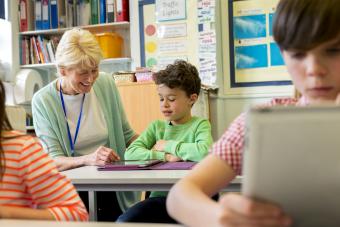
Improving Math Problem Solving for Students with Learning Disabilities: Solve It!

Next Generation Science Standards and Students with Disabilities: Effective Teaching Strategies

Equitable Access to the General Curriculum for Students with Extensive Support Needs: Current Research & Realities

Monthly STEM Ideas for the Classroom
As educators, it’s essential to keep our classroom activities fresh, engaging, and educational. Not only to keep our kids engaged, but as their teachers and leaders, we want to be excited about our lessons too. Here at STEAM Powered Family we are all about STEM and STEAM and the power it has to shape not only our lessons, but also to change our world. STEM (Science, Technology, Engineering, and Mathematics) is more than just a buzzword, it’s a way to frame the complex world around us in ways that make sense, while fostering the curiosity of our future change makers. With this in mind, I’m excited to share a fantastic resource to help you with your lesson planning for the next year! The Monthly STEM Ideas for the Classroom printable .
STEM Activity Ideas for the Year
What you will discover in this article!

Disclaimer: This article may contain commission or affiliate links. As an Amazon Influencer I earn from qualifying purchases. Not seeing our videos? Turn off any adblockers to ensure our video feed can be seen. Or visit our YouTube channel to see if the video has been uploaded there. We are slowly uploading our archives. Thanks!
Why Monthly STEM Ideas?
It can be hard for teachers, educators and homeschoolers to constantly come up with new and innovative ideas for students. We’ve been there, and we know the struggle is real!
We all could use a little inspiration every once and a while.
Throughout the year there are many special days that are assigned either nationally or internationally to mark important topics, take Earth Day for example in April or Pi Day in March. Knowing when these days are can help you plan out your year more effectively, but who has time to research all of that?
Well, we have done the work for you!
This printable is packed with inspiration and STEM ideas that align with special dates, seasons, and educational themes, ensuring that your teaching remains relevant and timely. From coding and chemistry, to environmental science and robotics, each month offers a fresh new STEM topic to explore that will ignite the curiosity and inventiveness of your students.
With these ideas you can customize your classroom lessons or homeschool plans, curate special library materials and school displays, or plan epic after school programs that kids will never forget! Best of all, you can adapt these ideas with activities for all ages, from preschool to high school.
Unlock the Printable
To access this printable, simply enter your email address in the form, then check your email to unlock the printable. As a member of the STEAM Powered Family mailing list you will get access to this, plus many more educational resources.
Highlights from the Printable
Here is a taste of what we cover in the printable.
September: National Coding Week
Kick off the school year by diving into the world of coding . Whether it’s creating a game on Scratch or building a simple robot , students will gain hands-on experience that teaches problem-solving and computational thinking.
October: National Chemistry Week
October brings the magic of chemistry to life. Chemistry doesn’t need to be scary. Try simple baking soda and vinegar reactions , grow crystals , make rubber bouncy eggs , or elephant toothpaste . There are so many different ways you can bring chemistry to your lessons for all ages.
November: National STEM/STEAM Day
Celebrate all facets of STEM and integrate arts to turn it into STEAM. A school-wide STEM fair or a STEAM art project can showcase creative educational approaches to interdisciplinary subjects.
December: Hour of Code
Explore the potential of computer science. From an Hour of Code to designing websites, students learn skills that are crucial in today’s digital world.
The learning continues, with ideas for the rest of the year. Spring into April with Earth Day , where students can engage in activities from tree planting to learning about sustainability. As the year progresses, each month unveils new themes and activities like National Space Day in May and National Moon Day in July, ensuring that the learning never stops.
This printable is more than just activities, it’s a planning tool that will help you integrate STEM into daily classroom life. Students will see how their lessons have real-world applications, and when that happens, you will see magic!
We also want to ensure we are helping our teachers and educators. Using this printable will help you reach curriculum goals, enhance students’ understanding of complex concepts, and builds a foundation for future scientific inquiry and exploration.
How to Get the Most Out of It
Some tips for making the most of your planning for the school year.
Use the printable as a resource to plan your school year. Align it with your curriculum goals and learning outcomes. Ensure you have all necessary materials ready to go for each month. You may want to stock up your No Prep Teacher Toolkit to ensure you are covered for the whole year. Especially when you want some quick STEM wins.
Once you have identified the themes you want to explore. Spend some time searching through our massive archives here at STEAM Powered Family. We have hundreds of STEM project ideas to help you make the most of your lessons with hands on discovery and learning. Use the categories in the menu at the top to explore or use the search bar for quick wins.
To supplement this printable, you can also grab our Weekly Educational Ideas for the Classroom printable. This is packed with even more ideas for your lesson plans.
Connect with Events
Tie the activities to corresponding seasons, events, or days that are important to your students. Nothing makes learning more impactful, than shaping lessons around what is important to the students.
Planning lessons can be overwhelming but it can also be really exciting. Hopefully this resource can help take away some of the overwhelm and make your year one your kids will never forget!
Happy planning and teaching, from the whole team here at STEAM Powered Family.
5 Days of Smart STEM Ideas for Kids
Get started in STEM with easy, engaging activities.
- Rating Count
- Price (Ascending)
- Price (Descending)
- Most Recent
Stem activities for sped
Resource type.

STEM Activities Pre K, Kinder and SPED

WINTER SNAP CUBE BUILDING TASK CARDS, STEM TASK BOX ACTIVITIES , TASK BOXES, SPED
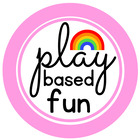
Paper Airplane STEM Activity Functional Math SPED Curriculum Adapt Science Units

SUMMER SNAP CUBE BUILDING TASK CARDS, SPED TASK BOXES, ESY ACTIVITIES , STEM BINS

Requesting with Sentence Stems Activities Speech Therapy ABA Special Education

FALL SNAP CUBE BUILDING TASK CARDS, STEM TASK BOX ACTIVITIES , TASK BOXES, SPED
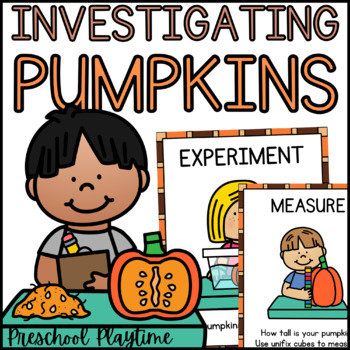
Investigating Pumpkins STEM Activities for Preschool, Kindergarten, & SPED

STEM Activity - Oil Spill Challenge - Earth Day - Special Education - Science
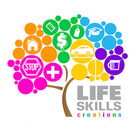
SPRING SNAP CUBE BUILDING TASK CARDS, STEM TASK BOX ACTIVITIES , TASK BOXES, SPED
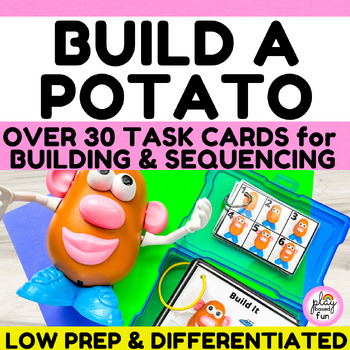
STEM TASK CARDS, SPECIAL EDUCATION TASK BOXES, BACK TO SCHOOL ACTIVITIES , SPED
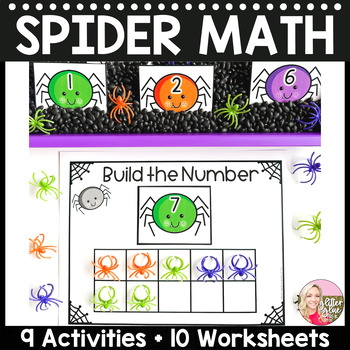

Halloween- Spider Math Activities -Preschool, Pre-K, Kindergarten

COLOR MATCHING TASK BOXES, FINE MOTOR TASK CARDS, SPECIAL EDUCATION STEM BINS

Pig the Pug Book Companion Activities for Language, Social Skills, STEM
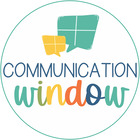
Build A Skyscraper PBL, A Project Based Learning and STEM Activity

PATTERNING TASK CARDS, KINDERGARTEN MATH, TASK BOXES SPECIAL EDUCATION STEM BINS
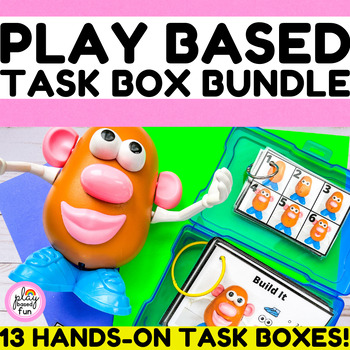
PLAY BASED TASK BOXES, SPECIAL EDUCATION ACTIVITIES , KINDERGARTEN CENTERS, PREK
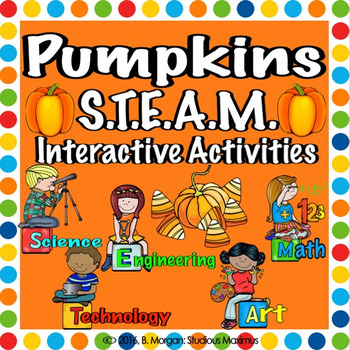
Pumpkins. STEM and STEAM Interactive Activities .

STEM Activities BUNDLE Pre K, K and 1st Grade
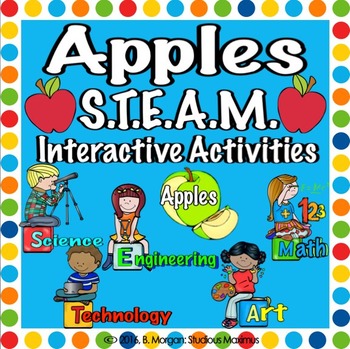
Apples. STEM and STEAM Interactive Activities .
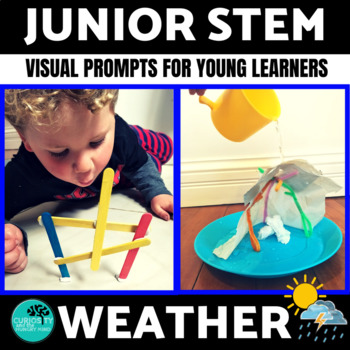
Weather and Climate STEM Activities - Pre K, Kindergarten & 1st Grade
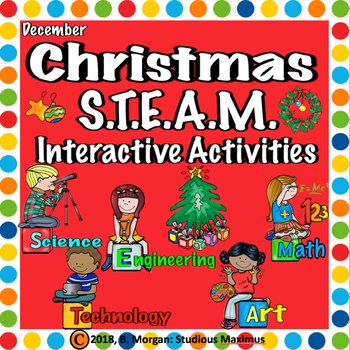
Christmas. STEM and STEAM Interactive Activities .
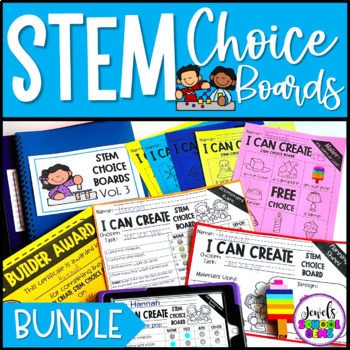
STEM Activities & Makerspace BUNDLE | STEM Choice Boards PreK Kindergarten 1st

Building Shapes with Marshmallows, Toothpicks and Pipe Cleaners STEM Activity

Friendship Tool Unit - Social and Emotional Learning Activities SEL Skills STEM
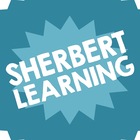
- We're hiring
- Help & FAQ
- Privacy policy
- Student privacy
- Terms of service
- Tell us what you think

Search form
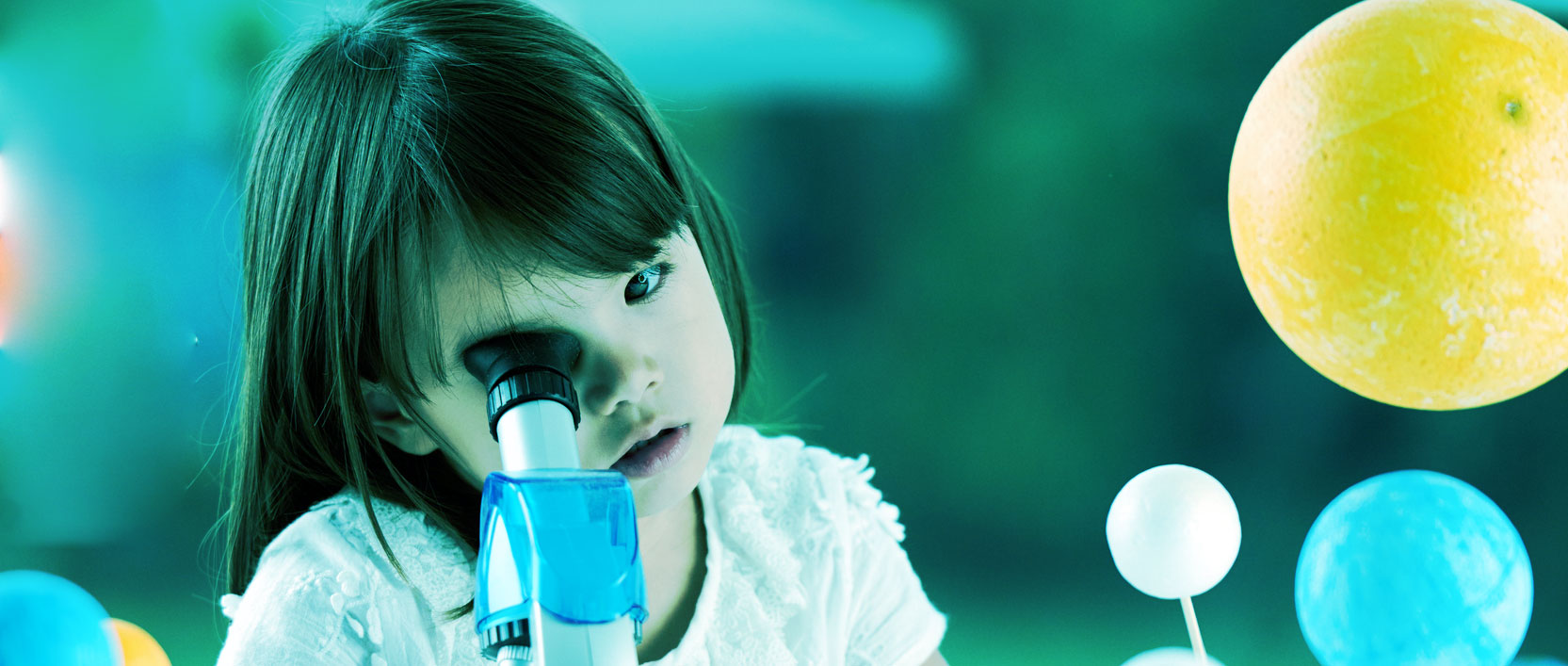
STEMI 2 E 2 Center
Ensuring young children with disabilities can engage fully and benefit from high quality STEM (science, technology, engineering, and mathematics) teaching and learning
Now Available!
Visit STEMIE Learning Trajectories website today to enhance your child’s playtime as well as everyday routines and activities to help them progress toward STEM goals.
My STEM Adventure
My STEM Adventure App provides the opportunity for young children to explore the world of STEM both indoors and outdoors and create a storybook that details their investigation.
Five things to know about STEM learning in young children
All children have the capacity to engage in activities that teach them about science, technology, engineering, and mathematics (STEM), not just older students.
Inclusion in STEM
Building on existing inclusion frameworks to develop and validate a STEMIE model for high quality inclusion of young children with disabilities in STEM learning.
Learning Trajectories
Developing and validating learning trajectories for science, technology, and, engineering, while continuing to refine and validate existing trajectories for math.
State of STEM
Conducting systematic reviews and needs assessments to understand current use and challenges with implementing STEM in early childhood programs and with providing supports for young children with disabilities.
Partnering with early childhood and early intervention programs to test innovative strategies and practices that can support young children with disabilities to engage and participate fully in STEM learning.
Stay Connected
Sign up to get email updates and our monthly newsletter.
Get updates about our work, products, and events.
Follow Us on Social Media
STEM4EC Blog changing platforms
2024 edtech awards cool tool finalist, we are now on instagram.
Check out upcoming opportunities to connect at conferences, presentations and other events.

- Gateway Articles >>
Making STEM Inclusive: Strategies for Engaging Students with Special Needs
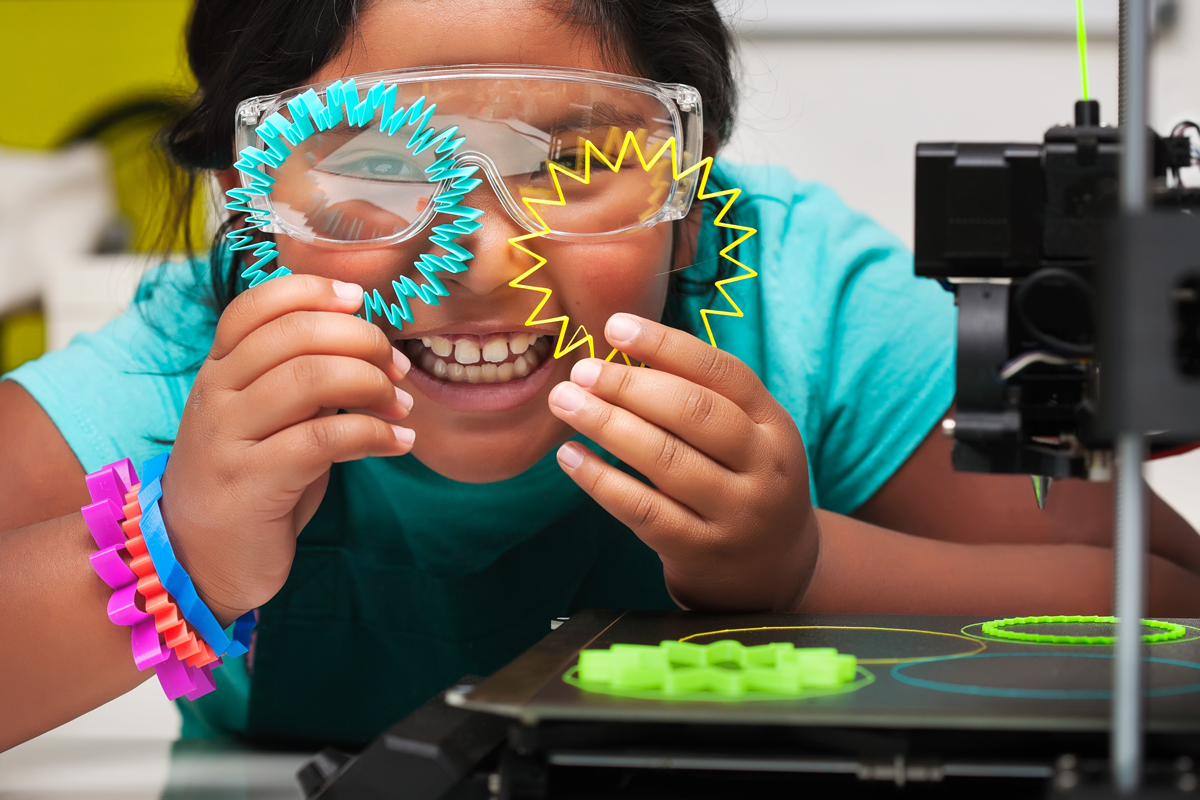
Science, Technology, Engineering, and Mathematics (STEM) education plays a critical role in shaping young minds and preparing them for future challenges. However, for students with special needs, accessing and fully engaging in STEM subjects can present unique obstacles. At Gateway School, we firmly believe in making STEM education inclusive and accessible to all students. In this blog post, we will explore the strategies we employ to engage students with special needs in STEM and how Positive Behavior Support (PBS) enhances the learning experience at Gateway School
Understanding the Barriers: Inclusivity in STEM Education
STEM subjects can be highly rewarding, stimulating and offer numerous opportunities for personal and professional growth. However, for students with special needs, the traditional teaching methods and learning materials in STEM classrooms may present significant barriers to engagement. Visual, auditory, or sensory challenges can hinder their ability to access information or participate in hands-on activities. At Gateway School, we view these challenges as opportunities to innovate and tailor our teaching approach to suit the diverse needs of our students. By embracing inclusivity, we create a dynamic and supportive environment where every student can flourish.
Adaptive Teaching Methods: Differentiated Instruction
Differentiated instruction is one of the cornerstones of inclusivity in STEM education at Gateway School. Our educators are skilled in creating adaptable lesson plans that cater to various learning styles and abilities. By customizing the content, delivery, and assessment methods, we ensure that each student can engage with the material in a way that best suits their needs. For instance, visual aids, manipulatives, and interactive technology are integrated into lessons to make abstract concepts more tangible. This approach benefits students with special needs and enhances the learning experience for all students by promoting a more comprehensive understanding of STEM topics.
Hands-On Learning: Real-World Applications
At Gateway School, we emphasize hands-on learning experiences that encourage students to apply STEM concepts to real-world situations. This approach helps bridge the gap between theory and practice, making STEM subjects more relevant and relatable to students. Through hands-on activities and experiments, students with special needs gain a deeper understanding of scientific principles, enhance problem-solving skills, and foster a sense of curiosity and discovery. Moreover, these interactive learning experiences boost student engagement and motivation, creating a positive and enriching learning environment.
Inclusive STEM Clubs and Activities
Gateway School's commitment to inclusivity extends beyond the classroom and into extracurricular activities. We offer various STEM programs that cater to diverse interests and abilities. These programs serve as safe spaces where students can explore their passions and collaborate on projects with their peers.
Inclusive STEM programs provide opportunities for skill development and foster a sense of community and belonging. Students with special needs can build self-confidence, form meaningful connections, and develop essential teamwork and leadership skills by participating in these activities.
Positive Behavior Support: Fostering a Supportive Learning Environment
PBS plays a vital role in creating a supportive and nurturing environment for all students, including those with special needs. At Gateway School, we prioritize PBS as a proactive approach to addressing behavioral challenges and promoting positive alternatives. By identifying triggers and potential stressors, we can effectively implement strategies to prevent or address behavioral issues in STEM classrooms. By fostering a culture of respect, empathy, and growth, we empower students to feel safe and supported, ensuring that they can fully engage in STEM learning without fear of judgment.
Collaboration and Communication: Team-Based Support
Effective STEM education requires a collaborative effort involving educators, support staff, parents, and students. At Gateway School, we believe in open communication and teamwork to meet every student’s needs.
Regular communication between educators and parents helps bridge the gap between school and home, enabling parents to effectively support their child's STEM learning journey. This collaborative approach ensures that strategies applied in the classroom are consistent and reinforced in all environments.
At Gateway School, we firmly believe in the power of inclusivity and its transformative impact on STEM education for students with special needs. We create an environment where every student can thrive by employing adaptive teaching methods, hands-on learning experiences, and a culture of positive behavior support.
STEM subjects are not just academic disciplines; they represent opportunities for personal growth, problem-solving, and creativity. By making STEM education inclusive, we open doors to a world of possibilities for our students, empowering them to reach their full potential and become confident, capable, and curious individuals.
If you are seeking a school that celebrates inclusivity and is dedicated to providing exceptional STEM education for all students, Gateway School welcomes you to join our community of learners, where we embrace diversity and foster a love for learning that knows no boundaries.
Request a Tour of The Gateway School

Since 1980, RKS Associates has been a leader in providing the needs of special education students and helping children grow to their fullest potential. Each of our schools seeks to empower each student with skills for life, work, and recreation; we believe that every individual possesses the dignity and potential to contribute to a better world. As part of the RKS Associates Network of schools in New Jersey, the goal at the Gateway School is to assist all students in becoming as independent as possible and help them get ready for the future. Located in Carteret, NJ, we serve individuals throughout Central and Northern New Jersey. Contact us at our main office at 732.541.4400 with any questions or schedule a private tour of the Gateway School today.
Chris Hoye, Principal-The Gateway School of Carteret, NJ
PARENTS ALUMNI CONTACT DONATE
Pathway’s curriculum includes daily experiences in STEM for students with special needs
“STEM for all” is The Pathway School’s unique approach to experiential learning in S cience, T echnology, E ngineering, and M ath. At most schools, STEM is an honors program. At some special education schools, STEM is offered as an elective. At Pathway, STEM is the core of our curriculum and permeates everything we do. Each day we are creating opportunities in STEM for students with special needs.
What is STEM?
STEM stands for Science, Technology, Engineering, and Math. STEM programs are designed to teach students 21st-century employment skills in an interactive and fun way. The STEM curriculum challenges students to think critically. With our project-based approach to learning, students gain real-world experiences and knowledge for their future.
Our STEM Program
Pathway’s approach to providing STEM education opportunities to all of our students, ages 5-21, will be ever-evolving as our students grow and technology changes. Students take the knowledge they have gained from their daily courses and apply them to STEM activities. For example, students use their math and engineering skills to measure, construct, and build in our vo-tech 2.0 classroom and maker space. They create robots, design 3D art, participate in woodworking, and much more.
Our students have the opportunity to work behind or in front of the camera by participating in video production or being an anchor on our morning Pathway Today show. The Beats by Girls program and our eSports lab enable our students to work together, find commonalities and passions between classmates, and maybe even a potential future career. STEM enhances our education across the board – in our classrooms and our STEM environments.
Click here to learn about Pathway’s Robotics program.
Innovative STEM Environments
To support our STEM-based curriculum and give our students an innovative and interactive environment, in the fall of 2019 we opened a state-of-the-art Innovation Center.
The Innovation Center is a place where students have the opportunity to use “Design Thinking.” It features a maker space for creating and learning using technology; a media center for video production; an eSports lab for competitive e-gaming; an engineering, tools, and tech space; and a classroom focused on the sciences.
In addition, students learn about reducing carbon emissions through the energy-efficient solar panels on the Center’s roof and students run a café in the Center’s culinary arts room. A multi-use dining and presentation space completes the Center’s offerings.
“In the Innovation Center, we are creating a culture where applying math, science and engineering is cool. With hands-on activities and new technologies, we foster abilities in cooperation, critical thinking, and correspondence, and setting the students up for achievement in school and the labor force,” states Jose Quijas, STEM Coordinator.
Academics & Services
- Transitional Services
- Career Education
- Upper School (9-12+)
- Lower School (K-8)
- Emotional Support Program
- Clinical Services
- Behavioral Support
- Extended School Year
- Safe2Say Something
RELATED ARTICLES
Rewind and celebrate: a look back at pathway’s amazing year.
Jun 21, 2024
What a year at The Pathway School! With so many exciting events and achievements, let’s rewind and celebrate all the fantastic moments that made the 2023-2024 school year unforgettable. It was a sea of blue and gold as we celebrated the Class of...
PATH To Domination: Triumph at First Competition of the Season
Mar 6, 2024
The Pathway School’s robotics team, PATH To Domination, are champions once again! For the second year straight, they've clinched victory at the First Robotics Mid-Atlantic Hatboro-Horsham event, kicking off their season with a bang! Made up of...
Creating a PATH: Robotics Education for All
Feb 22, 2023
Bringing the world of STEM and robotics to special education students is now a reality at The Pathway School. We are excited to be one of the only programs in the FIRST Mid-Atlantic Robotics Competition for students solely with special education...
Learn About Our Approach
Pathway’s unique holistic approach to education focuses on the student’s abilities and needs so that targeted instruction and support is provided to them!
- UT Austin Boot Camps
The Ultimate Resource Guide for STEM Students With Autism
Jump to STEM Resources
In an ideal world, any child who has a passion for science and the will to pursue it would be able to do so. But for countless children with autism, opportunities to explore such interests are often frustratingly few and far between.
According to the Centers for Disease Control and Prevention, approximately 17 percent of children between the ages of 3 and 17 have one or more developmental disabilities, including Autism Spectrum Disorder (ASD). Past research indicates that many of these children gravitate toward science, technology, engineering, and mathematics (STEM) once exposed to the disciplines. One such study found that over a third of young adults with an autism spectrum disorder (34.1 percent) chose a STEM major in college. This rate is significantly higher than that of the general student population (22.8 percent).
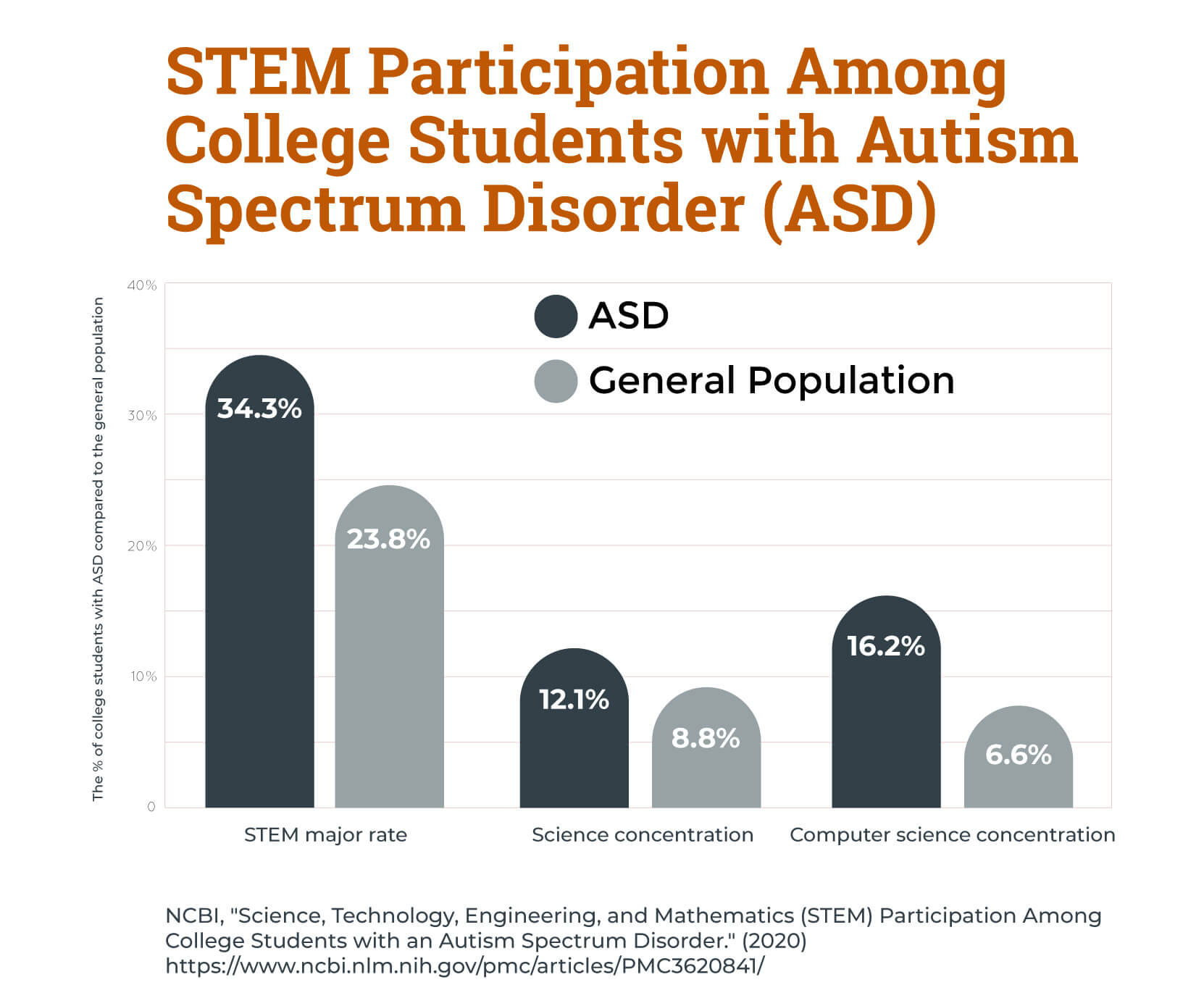
“This missed opportunity is detrimental for these children,” Megan Vinh, an Advanced Technical Assistance Specialist at the Frank Porter Graham Child Development Institute, explained in an article on the matter . It’s not just that they are being excluded from this — it’s really an opportunity they are denied, and that is a true inequity.”
Vinh explains that students with learning disabilities like autism might be taken out of class to receive other services while their peers engage in STEM activities. Alternatively, some schools might deprioritize science learning out of a belief that such students can gain more from different areas of learning. “But we know from research that engaging in STEM supports gains in other content areas, so it’s critical they participate,” she concludes.
Indeed, this lack of access is unfortunate, especially given that the benefits of childhood exposure to STEM are well-documented.
“STEM habits of mind — such as critical thinking, persistence, and systematic experimentation — are important across all subject areas and may be essential to how children learn to learn,” researcher Elisabeth McClure explained in an article for the National Association for the Education of Young Children (NAEYC). “This development is not just about the basics like counting and vocabulary, although these skills and background knowledge are important too; it’s about problem solving and other higher-level skills that transfer across many domains.”
To McClure’s point, STEM education is not just about building science skills or driving children toward technology careers. Research indicates that it can also support ingenuity and creativity, build resilience and experimentation, promote teamwork, and advance problem-solving skills and adaptability.
But despite the benefits noted above, many students with ASD are not encouraged to pursue post-secondary education at all. The same researchers who reported the correlation between students with ASD and increased interest in STEM majors also found that these students had the third-lowest level of post-secondary enrollment out of the ten disability categories they studied.
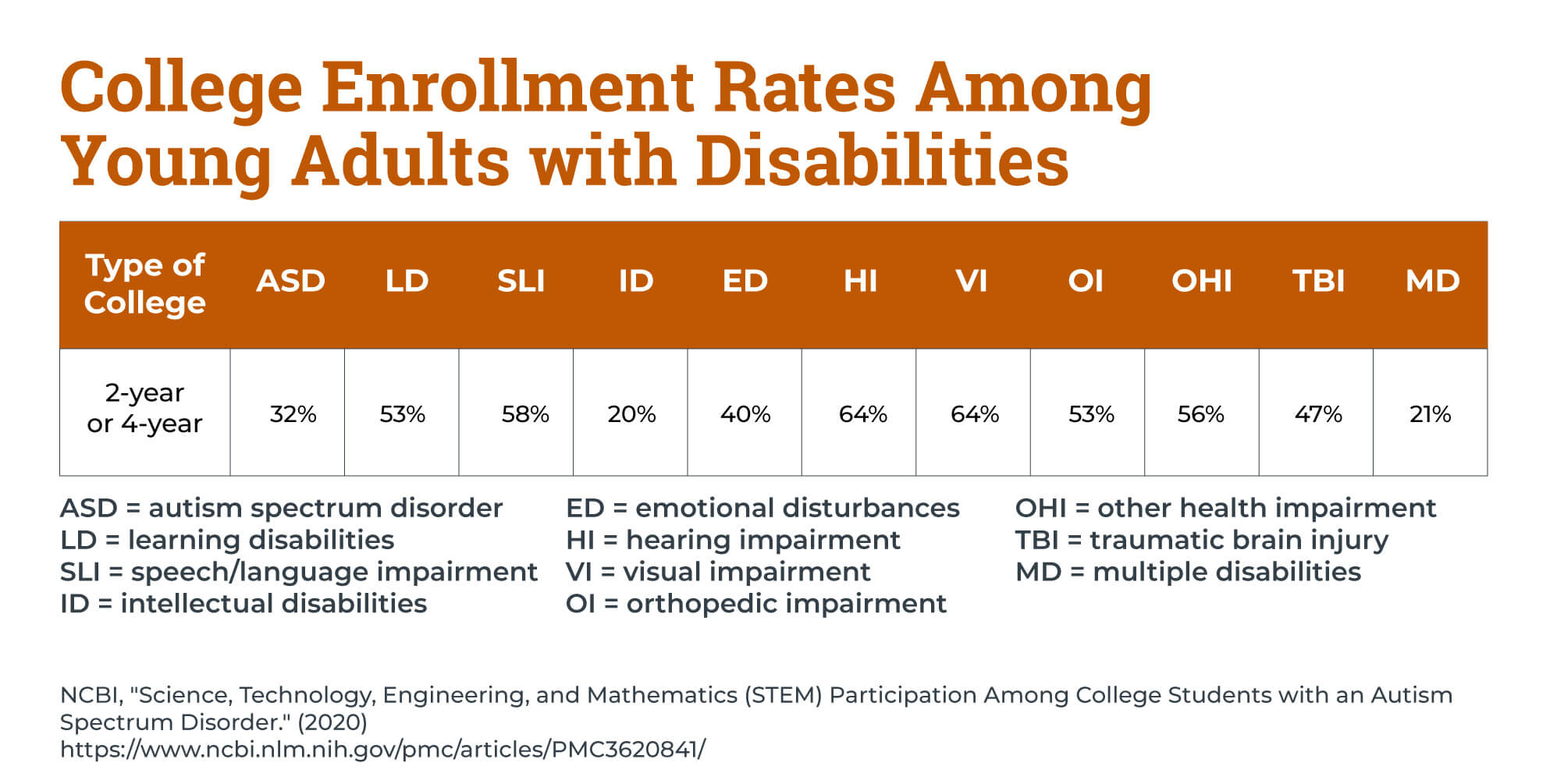
What does this mean? If educators and parents provide greater academic support at earlier ages, including exposure to STEM, more students may have access to post-secondary educational opportunities. As the study concludes , if “advances continue in the early identification and treatment of children with autism…these enrollment rates are likely to increase and, consequently, STEM participation among individuals with an ASD may also continue to increase over time.”
Education for students with autism and other disabilities is changing . The principle of inclusion has become widely supported and recognized by national, state, and local educational authorities and has become a mandate for most districts. However, barriers prevent students with autism from being genuinely engaged in school STEM activities, especially at the early age levels. We need to do more to improve these students’ access to STEM studies and higher education as a whole.
Below, we’ve listed a few major disciplines, each with a summary of the field and a series of resources for students with autism who want to pursue their passion for science, technology, engineering, or mathematics.
Happy explorations!
STEM Resource Categories
Programming.
Programming involves writing code that provides instructions to a computer that enables it to operate, run software programs, or execute applications. This code drives everything from the operation of your everyday desktop or laptop to the websites you visit and the mobile apps you download.
Below, we’ve included a few resources that may help children with autism learn introductory programming concepts.
- 3 Reasons Autistic Children Excel at Computer Coding — This article notes that children on the autism spectrum often excel in computer programming because it is logical, predictable, and generally well-suited for visual learners. It also explains how children with ASD benefit from programming courses.
- Coding for Kids with Autism – The Ultimate Guide for Parents and Educators — This article provides a guide for parents and educators who want to help their students learn to code. It offers tips, indicates challenges, and points out the advantages of teaching programming to children with autism. The guide also provides specific examples of appropriate coding projects for younger children.
- Coding for Life Course by Autism Spectrum Australia — Available on iTunes, this course was developed by Autism Spectrum Australia to introduce kids to computer programming. It was designed specifically for kids with autism and imparts daily life skills as well as programming knowledge.
- Turing Tumble — This educational toy allows children to learn about how computers work from the inside out by building marble-powered computers and seeing the power of switches and connections firsthand.
- Tynker: Coding for Kids Made Easy — This coding platform is designed to educate and entertain children as they learn coding languages such as JavaScript and Python. Over 60 million kids have learned to program on Tynker.
Engineering
From bridges and buildings to toasters, TVs, and computers, engineers guide and advance their design and implementation. Engineers use STEM principles to develop solutions to real-life problems, bringing the science of STEM into practice in society. Engineering can involve a wide array of specialties, including chemical engineering, mechanical engineering, civil engineering, and electrical engineering.
Here are a few resources that can help children with ASD pursue their interest in engineering.
- Being an Autistic Engineer — This article, written by an engineer with autism, discusses the traits of many people with autism and why they may be well-suited to engineering. He recalls his own interest in engineering from a young age and encourages engineering education for children.
- Space Engineers Game — This educational sandbox game imparts physics and engineering lessons while players explore space and strange planets.
- Unofficial Minecraft STEM Lab for Kids — Minecraft is a viral video game for younger children. This guidebook offers innovative projects for the whole family that make use of Minecraft to explore critical topics in engineering and physics.
- Using Lego Therapy for Autism — LEGO bricks have been a great educational toy for many years, as they can spark interest in building and construction. Here, the author notes that this beloved toy can also help children with autism pick up more social skills.
- 15 Amazing Lego Builds for the Young Engineer — Here are some creative projects that incorporate engineering concepts into LEGO play.
Data Science
Data scientists combine programming skills, statistical and mathematical knowledge, and topical knowledge to analyze and extract insights from raw data. Their work can be useful for companies, governments, marketers, and many others who want to better understand how populations act and why.
Here are some resources to support your child’s interest in this growing field.
- Students With Autism Excel in Working With Data, Helping Scientists — This article highlights the successes that data scientists with autism have achieved despite being told they had little potential in STEM.
- Beats Empire — This educational game riffs on the idea of competition in the music industry. Players leverage mathematics and data science concepts such as trend analysis to determine which “artists” will rise to the top.
- The ABCs of Data Science: By Real Data Scientists, For Future Data Scientists — This book introduces data science basics to early readers and imparts key principles in a fun, accessible manner.
- Neurodiversity as a Competitive Advantage in Data Engineering — This article makes a case for why neurodiverse people may be better suited to data science and engineering than most others.
- Machine Learning for Kids — Machine learning and artificial intelligence are on the advanced edge of data science. These IBM-created activities give kids the chance to explore the basic tenets of machine learning.
Physics, which examines matter and its motion through space and time, underlies many of the applied STEM fields, including computer programming, data science, and engineering. Physics can include these more applied studies as well as broader, theoretical studies of nature that aim to understand why the universe behaves in the ways that it does.
Check out the resources below to support your child’s education in physics.
- Different Kettle of Fish: A Day in the Life of a Physics Student with Autism — This illustrated book vividly tells the story of a physics student with autism.
- My First Book of Quantum Physics — This book for young readers introduces advanced quantum physics concepts in an accessible, easy-to-read, and illustrated manner.
- Physics Workshop — This educational toy kit offers a wide array of tools and activities, including 36 models and 37 experiments for kids to try.
- 7 Video Games That Are Perfect For Teaching Physics — Video games offer students an accessible means to learn basic physics concepts. This article details seven such games that offer children the chance to balance their physics lessons with play.
- Q&A: Daisy Shearer, experimental physicist and autism ambassador — A Ph.D. candidate in physics speaks about her experiences as a researcher with ASD and the importance of prioritizing academic inclusion from an early age.
Game Design
Sure, video games are often pitched as child’s play — but designing and creating video games is a significant STEM career! Game design takes a lot of work; the job includes planning, writing, and programming interactive content. Coding skills are essential to game design, and gaming can spark a young person’s interest in complex programming concepts.
Here are some game design resources that can foster a love of STEM among young people.
- How Satoshi Tajiri, a Game Designer with Autism, Created an International Phenomenon — This article details how the creator of Pokémon, a game designer with autism, leveraged his neurodiversity and creative skills to achieve international success in game development.
- Peter Lantz: Using His Asperger’s For A Career In Video Games — This interview explains how one game designer with autism found career success and turned over new opportunities in the game design field.
- GameMaker Studio — This easy-to-use game development software helps young people and people of all ages to get started learning game design with a built-in language.
- 14 Tools to Turn Game-Obsessed Kids into Genuine Game Designers — Countless kids love video games. This article provides insights on how parents and students can turn a child’s passion for gaming into a talent for game design.
- Start Them Young: Kids’ Video Game Maker — This article provides tips and resources for parents and educators on how to get kids involved in gaming design from an early age.
Astrophysics
Astrophysics, the science of space, uses the laws and principles of chemistry and physics to understand our universe. It studies the stars, planets, galaxies, and other objects in the universe, dealing with the physical properties, movement, and behavior of celestial objects.
Below are some resources to encourage interest in astrophysics among children with autism.
- Jacob Barnett’s Curious and Computational Mind — This article interviews Jacob Barnett, an exceptional thinker with ASD, who became a world-leading theoretical physicist in his teens.
- Astrophysics for Young People in a Hurry — This book explores physics and the nature of space and time through an illustrated, accessible format.
- Kerbal Space Program — This educational game allows players to create and manage their own space program and explore astrophysics concepts.
- Activities for the Classroom — These classroom activities, provided by NASA, are designed to spark kids’ interest in astrophysics.
- Stellarium — This free, open-source planetarium for the home computer offers detailed sky images that allow budding astrophysicists to explore the universe.
The entire universe is made up of chemicals — everything you do involves chemicals in some way — from the chemical processes inside your body to the food that you eat. Chemistry studies matter, its properties, and how it interacts with energy and other matter.
People might think of lab testing or hazardous substances when they think of chemistry, but in many ways, chemistry is a study of the building blocks of life. It is a foundational part of cooking, cleaning, and countless other everyday activities.
Use the resources below to inspire young children with ASD to explore the field!
- How to Support Students With Autism Spectrum Disorder — Some chemistry projects can be stressful or challenging for students with autism. This article explores ways to make them accessible and engaging.
- Chemistry Puzzles, Games & Toys — The American Chemistry Association curated this list of games and toys for parents who want to provoke and support their child’s interest in chemistry.
- Top Chemistry Projects for Bored Kids — Here are some chemistry projects that can be fun, enjoyable, and educational for children interested in science.
- Exploring the Elements: A Complete Guide to the Periodic Table — This accessible, enjoyable guide takes readers on an illustrated tour of the periodic table of elements.
- HoloLAB Champions — This enjoyable educational game gives players the chance to take part in an engaging, laboratory-based competition.
Biology is, quite simply, the study of life. It involves studying living organisms and their structure, growth, evolution, and development. Biology helps us understand the earth, develop medical treatments, and explore unknown plants and creatures — and much, much more.
Explore these resources below to introduce children with autism to the basics of biology.
- Cell Structures Biology Interactive Adapted Book — This adapted book on cell structures is specifically designed for students with autism and offers an abundance of illustrated resources.
- 7 Video Games That Can Teach You About Biology — This listicle offers a number of educational (but fun!) biology-centric video games.
- The Girl Who Thought in Pictures: The Story of Dr. Temple Grandin — This book tells the story of Dr. Temple Grandin, a biologist with autism. The book is illustrated and accessible for younger children.
- 5 Biology Experiments You Can Do at Home — This article describes five biology experiments that kids can try without a lab setting.
- Free Science Lesson Plan and Resources – The Coloured Ice and Oil Experiment — This biology-centric lesson plan is specifically designed to suit young learners with ASD.
Environmental Science
In a world where climate change is a significant concern, many young learners want to do everything they can to improve the environment and protect it from harm. Environmental science brings together biology, chemistry, engineering, physics, geology, and meteorology to better understand ecology and the effects of human interaction on the planet.
Below, you’ll find a few resources to cultivate children’s interest in environmental science.
- Autism and Earth Science Resources — Teachers Pay Teachers provides an array of lesson plans and quizzes designed to promote earth science education for kids with autism.
- TED-Ed on Environmental Science — TED videos are known for their short-form, engaging approach to informative lessons. These videos explore environmental science topics in an accessible manner.
- 5 Awesome Environmental Science Learning Games — Here are five exceptional video games that promote environmental learning.
- 16 Cool Environmental Science Projects — This article overviews 16 hands-on projects that can foster kids’ interest in the earth sciences.
- 33 Great Children’s Books for Earth Day — Explore a wide array of engaging books designed to interest young people in environmental science.
Mathematics
Mathematics involves the study of numbers and how they interact. This field can involve theoretical analysis as well as applied mathematics topics such as statistics or game theory. Mathematics is at the core of many disciplines, including computer science, engineering, the natural sciences, medicine, and finance.
Check out these resources below for ideas on how to further math education for students with autism!
- Why Are People With Autism Often Good at Maths? New Study Offers a Clue — This article explores why children with autism often find great success and interest in mathematics.
- 7 Video Games To Help Make Teaching Math Fun — Is your child a gamer? Pair the fun with math by introducing them to these educational video games!
- Practical Mathematics for Children with an Autism Spectrum Disorder and Other Developmental Delays — This book offers specific suggestions and approaches to teaching mathematics to children with autism.
- Amazing Visual Math — Many kids with autism are visual learners. This book makes math fun and engaging by presenting arithmetic concepts through illustration.
- Simple Ways to Help a Child With Autism Master Math — This article offers tips and tricks on promoting math education for students with autism, especially at an early age.
These are just some of the exciting STEM areas that can provoke great interest and engagement for students with autism.
It’s time for kids with autism to be fully included in all areas of STEM study and pursue any passion they might have for science, technology, engineering, and mathematics. With these resources at hand, you can help these students achieve their academic potential — and perhaps even spark a lifelong interest.
Get Program Info
Step 1 of 6

- Alpha School Articles >>
Making STEM Inclusive for Special Needs Students
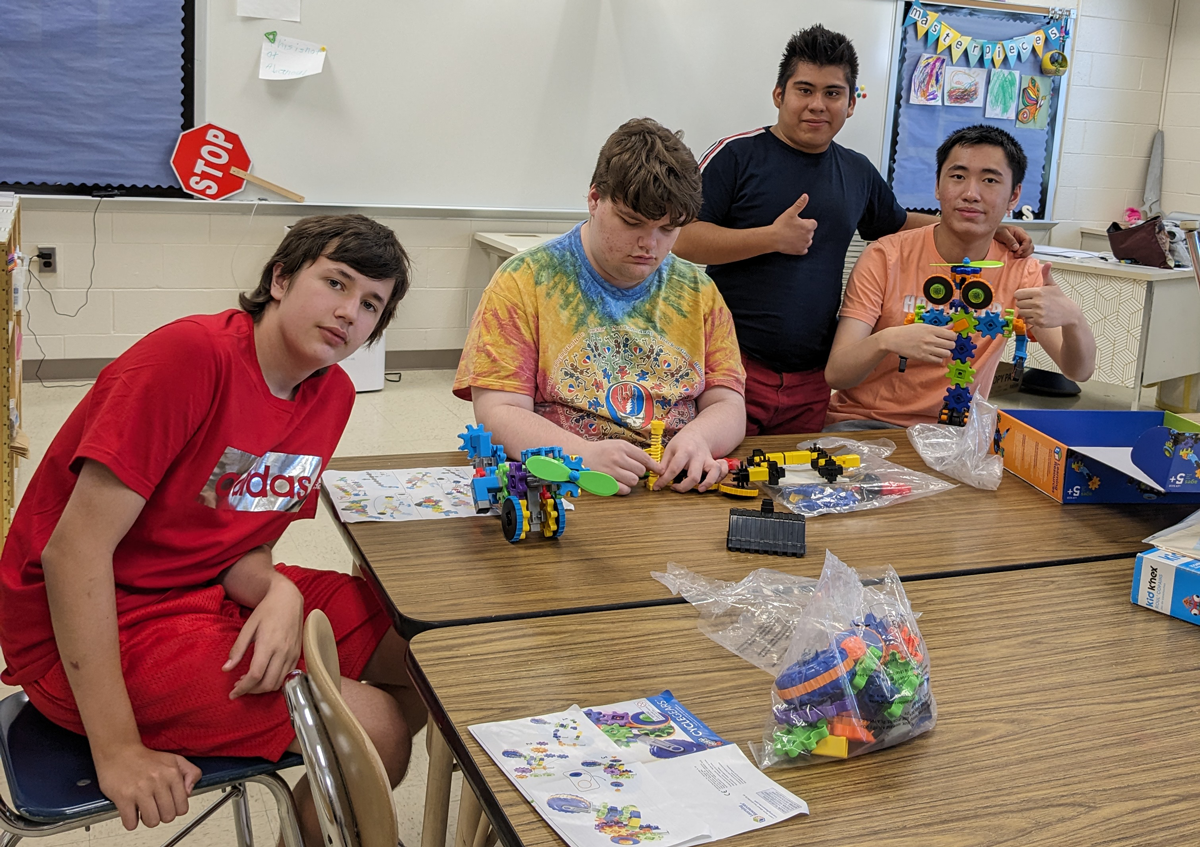
Science, Technology, Engineering, and Mathematics (STEM) fields drive innovation and change, and ensuring every student has access to these vital areas of learning is crucial. At Alpha School, we believe in making STEM education inclusive, recognizing that this approach builds students' confidence and caters to their diverse learning styles and abilities.
The Power of STEM in Boosting Confidence
STEM education goes beyond imparting knowledge; it's about instilling confidence. At Alpha School, we've seen firsthand how STEM can transform students' self-perception and belief in their abilities. When students with special needs engage in STEM activities, they discover new skills and interests, which fuels their confidence and self-esteem.
This boost in confidence is multifaceted. Firstly, there's the pride that comes from solving a complex problem or completing a challenging project. STEM subjects are often perceived as difficult, so succeeding in these areas can be particularly empowering for students. Secondly, as students engage in hands-on, practical work, they see the real-world applications of their learning, which reinforces their sense of purpose and capability.

Catering to Different Learning Styles and Abilities
At Alpha School, we recognize that every student is unique, with their own learning style and set of abilities. This understanding is at the core of our approach to STEM education.
Visual and Kinesthetic Learning
Many students with special needs are visual or kinesthetic learners. Our STEM curriculum incorporates plenty of hands-on activities that allow students to learn by doing. Whether it's building models, conducting experiments, or using technology, these activities cater to students who learn best through experience and engagement.
Individualized Instruction
Our educators are trained to provide individualized instruction, tailoring lessons to meet each student's specific needs. This might involve breaking down complex concepts into smaller, more manageable parts or providing extra support and resources where needed.
Utilizing Technology
Technology is a great equalizer in education, and it plays a significant role in our STEM curriculum. From using tablets and computers to engage with interactive learning programs to incorporating advanced software in lessons, technology makes STEM more accessible and engaging for all students.
Creating a Supportive Environment
A supportive learning environment is key to the success of our STEM program. In our classrooms, mistakes are viewed as learning opportunities, and curiosity is always encouraged. This atmosphere allows students to explore and experiment without fear of failure, which is essential for developing a love for STEM.
Connecting STEM to Real-World Scenarios
We strive to connect STEM learning to real-world scenarios, making it relevant and exciting for students. This approach helps them understand the practical applications of their learning and how they can use STEM to make a positive impact in the world.
The Outcome: Confident and Capable Learners
The inclusive STEM education at Alpha School leads to the development of confident, capable learners. Our students not only gain knowledge in essential academic areas but also develop critical thinking, problem-solving, and collaboration skills. These skills are not just crucial for academic success; they are invaluable life skills that prepare our students for the future.
Closing Thoughts By making STEM education inclusive, we at Alpha School are not just teaching science, technology, engineering, and mathematics. We are nurturing a generation of confident, creative, and capable learners, ready to face the challenges of the future. Through our personalized, hands-on, and technology-integrated approach, we ensure that every student has the opportunity to explore and excel in these vital fields.

Alpha School an private special education school in New Jersey
Our Mission at The Alpha School is to help all of our special needs students with the learning, social, language, and behavioral support they deserve. Our highly skilled staff are committed daily to helping each student to becoming the best they can while providing a safe and nurturing educational environment.
We would be more than happy to discuss your child’s specific needs and challenges, so please call us at 732.370.1150 , or request a tour of Alpha School of Jackson, NJ located just minutes off of Route 9 and Route 195 in Ocean County.
— John Gonzalez, Principal-Alpha School, Jackson, NJ

The Homeschool Resource Room
creative ideas, practical advice, genuine support

15 Spring STEM Activities
This post may contain affiliate links. See our disclosure policy for details.
I’m so excited to say goodbye to snow and welcome the new season with some spring STEM activities ! Read on for great ideas to get your kids excited about the new season and hands-on learning!

Hands-on learning with STEM has really enhanced our homeschool this year. Science has become a really enjoyable part of our homeschool routine that my kids look forward to.
This spring, I’m planning a “spring break” of sorts focused on STEM activities. If you’re not familiar, STEM focuses on hands-on learning for S cience, T echnology, E ngineering, and M athematics.
I’m no scientist, so I follow some fantastic activity-based and science blogs for experiments and activities. Check out the following list of spring STEM activities, and have fun learning!
Spring STEM Activities: S is for Science
Dissect a Flower What is spring without flowers? This activity on The Learning Hypothesis will have your child taking an up-close look at flowers and their parts. An excellent first step into learning the process of dissection and making powerful observations.
Color Changing Flowers Experiment This is a classic for spring. Go Science Girls explain how flowers absorb water and give simple instructions, recommendations for older kids, and a link to a close up of the botanical aspects of the gerbera daisy.
Seed Jar Science Experiment Little Bins for Little Hands shows us a great way to take a clear look at a seed sprouting. A great project for little ones to see how things work. Older kids can practice observing and recording results over time.
Egg Geodes Tinkerlab shares a unique experiment with three different materials with egg shells. A great experiment to practice the scientific method, make predictions, watch and record results over time.
Walking Rainbow Steam Powered Family brings us a traveling rainbow experiment where we examine the capillary action of water traveling. One of the most beautiful experiments you can try!
Spring STEM Activities: T is for Technology
Static Electricity Butterfly Experiment This is a fun and simple, kinda crafty electricity experiment that your kids will enjoy. I Heart Crafty Things teaches us how to make a tissue paper butterfly flap its wings using a balloon and static electricity.
Circuit Bugs Explore electrical circuits with Steam Powered Family. Get crafty creating pipe cleaner bugs and light them up with LED lights powered by circuits you create!
Making Paper Recycling is at the forefront of our minds around Earth Day. Schooling a Monkey brings us a hands-on way to learn how paper is recycled. Great to pair with your Recycling Unit Study !
Digital Flower Still Life Such a cool twist on your run-of-the-mill still life. Kids Steam Lab brings us step-by-step directions on how to turn a flower drawing into a digital work of art. Great introduction into digital art for your little artists!
Spring STEM Activities: E is for Engineering
Egg Parachutes JDaniel4’s Mom brings us a fun engineering project with plastic eggs! What a great project for those leftover Easter eggs! This project uses simple items that you may already have at home and turns it into a fun exercise in wind resistance!
Make a Kite Do you have a breezy spring? If so, check out Buggy and Buddy’s instructions on how to build your own kite. A great engineering activity and so much fun to get outdoors and fly a kite in the springtime!
Weather Vane Project 123 Homeschool 4 Me gives us great visual instructions for building your own homemade weather vane and a few learning points about wind. A fun project to keep an eye on in the changing weather.
Spring STEM Activities: M is for Mathematics
Geometric Shape Flowers Fun-A-Day shows us a great activity with felt flowers (surely can be completed with construction paper as well). Use geometric shapes to create a pattern. Fun and creative play with geometry and would make a great gift for grandparents 😉
Telling Time Match Up Another fun use for leftover plastic eggs! The STEM Laboratory shows us how to use your leftover eggs to practice telling time. The mathing possibilities with this are endless: addition, subtraction, multiplication, or division problems, shape or pattern matching, even matching the number of dots and a digit would be great for little ones!
Jelly Bean Graphing We always have tons of leftover jellybeans – because yuck. Well, Simply Centers has a great idea to do before you toss those gross little sugar bombs. Use their free printable to practice your graphing skills.
Related posts from the Resource Room: 15 Easter STEM Activities 15 Summer STEM Activities 30+ FUN St Patrick’s Day Activities for Kids! 5 Days of EASY Dr. Seuss Projects for Read Across America Week!

Ashley helps parents who want to homeschool find the resources they need to successfully teach their children. Ashley is a former teacher, current homeschooler, published author, and designer behind Circle Time with Miss Fox printables as well as the creator of this website, The Homeschool Resource Room.
4 replies on “ 15 Spring STEM Activities ”
Thank you for sharing these cool ideas!!
You’re so welcome! Have fun!
- Pingback: 15 Easter STEM Activities – The Homeschool Resource Room
- Pingback: 20 BEST Preschool STEM Activities to WOW Your Kids!
Leave a Reply Cancel reply
This site uses Akismet to reduce spam. Learn how your comment data is processed .
Discover more from The Homeschool Resource Room
Subscribe now to keep reading and get access to the full archive.
Continue reading
How STEM Can Play a Role in Special Education
by Skill Prepare | Sep 9, 2023 | Blog

In today’s rapidly evolving world, STEM (Science, Technology, Engineering, and Mathematics) has become a cornerstone of modern education. But when we talk about STEM, the conversation often revolves around mainstream education. What’s less discussed, but equally important, is the role of STEM in special education. Integrating STEM into special education can offer numerous benefits, from enhancing cognitive skills to providing hands-on learning experiences. Let’s delve into how STEM can be a game-changer for special education.
1. Personalized Learning Experiences For Special Education
Every student in special education has unique needs and learning styles. STEM , with its practical and exploratory nature, can be tailored to fit each student’s requirements. For instance, a child with a physical disability might find it challenging to write or draw. However, using technology, they can design 3D models or program robots, turning a potential obstacle into an engaging learning experience.
2. Enhancing Cognitive Skills
STEM activities often involve problem-solving, logical reasoning, and critical thinking. For students with cognitive challenges, these activities can be therapeutic. They can help improve memory, attention span, and other cognitive functions. Simple engineering tasks, like building a bridge with blocks or programming a basic robot, can stimulate the brain in ways traditional teaching methods might not.
3. Hands-on Learning With STEM
Many special education students benefit from tactile learning experiences. STEM, especially the engineering and science components, is inherently hands-on. Whether it’s dissecting a flower to understand its parts or constructing a simple circuit, the tangible nature of these activities can make abstract concepts more accessible and memorable.
Visual and Experiential Learning: STEM subjects, particularly science and engineering, are rooted in visual and experiential learning. For students with learning disabilities or attention disorders, traditional text-based learning can be challenging. STEM activities, with their emphasis on experiments, visual models, and interactive tasks, can cater to these students by offering alternative ways to grasp complex concepts.
4. Boosting Confidence and Independence
Success in STEM activities can provide a significant confidence boost. Completing a science experiment or building a working model can give students a sense of accomplishment. This success can translate into increased self-esteem and a belief in their abilities, fostering a more independent learning attitude.
5. Preparing for the Future
The world is becoming increasingly reliant on technology and STEM-related jobs are on the rise. By introducing special education students to STEM, we’re giving them tools and skills that can be beneficial in the future. Whether or not they pursue a STEM career, the analytical and problem-solving skills they gain will serve them in many life scenarios.
Building on Inherent Strengths: Many special education students possess innate skills and talents that align perfectly with STEM fields. For instance, some students on the autism spectrum may have heightened abilities in pattern recognition, a skill crucial in coding and mathematics. By introducing them to STEM, we’re not just teaching new subjects but also recognizing and nurturing their inherent strengths.
6. Incorporating Assistive Technologies
Technology is a significant component of STEM, and it plays a crucial role in special education. Assistive technologies, like speech-to-text software or screen readers, can make learning more accessible for students with disabilities. By integrating these tools into STEM activities, students can engage with the material in ways that cater to their individual needs.
Adaptive Learning Tools: Technology, a key component of STEM, brings forth a plethora of adaptive learning tools specifically designed for students with disabilities. From screen readers for the visually impaired to voice recognition software for those with motor challenges, STEM provides the tools to customize learning experiences based on individual needs.
7. Encouraging Collaboration
STEM projects often emphasize collaboration and teamwork. In a mixed classroom with both mainstream and special education students, STEM projects can serve as a platform for peer learning and mutual understanding. Such collaborative efforts can break down barriers, fostering a more inclusive and empathetic classroom environment.
Integrating Real-World Applications in Special Education through STEM
One of the most compelling aspects of STEM is its direct connection to the world around us. For special education students, this real-world relevance can be particularly transformative, bridging the gap between classroom learning and everyday life.
Contextual Learning: STEM inherently revolves around real-world problems and solutions. For instance, understanding the science behind weather patterns can lead to discussions about climate change and its impact on our planet. For special education students, this contextual approach can make abstract concepts more tangible. When they see the direct implications of what they’re learning, it can enhance comprehension and retention.
Life Skills Development: Beyond the academic benefits, STEM offers practical life skills. For example, basic mathematical concepts can be taught through budgeting exercises or planning a grocery shopping list, helping students navigate real-life situations. Similarly, understanding the basics of technology can empower students to use smartphones, computers, and other devices more effectively and safely.
Environmental Awareness: STEM activities, especially those related to science, can foster a deeper appreciation for nature and the environment. Special education students can engage in projects like planting gardens, studying local ecosystems, or even exploring renewable energy sources. Such hands-on experiences can instill a sense of responsibility and a deeper connection to the world they inhabit.
Problem-Solving in Everyday Scenarios: Engineering challenges in STEM can mimic everyday problems, such as designing a ramp for wheelchair access or creating a device to help with simple tasks. By working on these projects, special education students can develop problem-solving skills that they can apply in their daily lives.
Incorporating STEM into special education is not just about keeping up with educational trends. It’s about providing all students, regardless of their abilities, with the best possible learning experiences. STEM offers hands-on, engaging, and personalized learning opportunities that can cater to the unique needs of special education students. By embracing STEM, educators can ensure that these students are not left behind but are instead equipped with the skills and confidence to thrive in the 21st century.

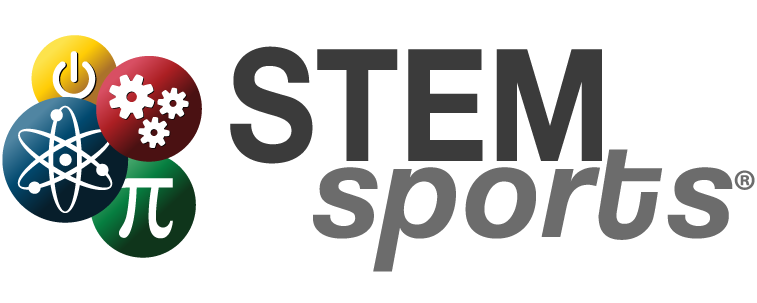
STEM Activities for Special Education Students
- Lauren Chiangpradit
- June 4, 2024
- Reviewed by Sean Barton
- Reviewed by Haley MacLean
Table of Contents
Adapting STEM Activities for Diverse Learning Needs
Fun and simple stem activities, integrating stem with everyday activities, using technology to enhance stem learning, empowering all students through stem.
Science, technology, engineering, and mathematics (STEM) learning should be an inclusive part of every student’s education regardless of circumstances. It is imperative each student be given access to a quality education to build their STEM literacy and prepare themselves for a successful future. This need for inclusivity in STEM extends to all students, including those with special needs. There are STEM curricula for special education students that tailor learning to the unique needs of the group, encouraging curiosity and engagement in STEM.
In this article, you will learn about how to create STEM activities for special education students to ensure success.
Special education students often have diverse learning needs that differ from those of other students. When creating a successful STEM activity for these students, it is beneficial to look at adapting the lesson to meet those needs, which will lead to increased student success.
Here are three (3) ways to implement STEM activities that will help special needs students stay engaged in lessons:
- Use of Visual Supports: Incorporating pictures, diagrams, and videos to help students understand concepts.
- Tactile Learning Materials: Using textured materials, building blocks, and beads to make abstract concepts more concrete.
- Multisensory Approaches: Combining visual, auditory, and tactile inputs to engage students regardless of their learning styles.
It is a common misconception that STEM activities are expensive and difficult to implement. There are a variety of STEM activities easy to implement with common household items, making it the perfect learning experience for the classroom, at home, in after-school programs, or in summer camps.
Below is a list of fun and simple STEM activities for special education students:
- Sensory Bottles: Students will create sensory bottles to explore concepts like density and buoyancy.
- Simple Circuits: In this lesson, students will use battery packs, wires, and light bulbs to build basic circuits and understand electricity.
- Balloon Rockets: Through building balloon-powered rockets, students learn key physics by observing their rocket’s motion.
It is proven that connecting classroom concepts to real-world situations helps students see the importance of what they are learning and leads to higher comprehension and retention levels. There are ways to connect STEM to everyday life. This is a powerful tool for parents and educators to introduce STEM concepts organically in an exciting way.
Here are some inspirational ideas for how to connect STEM learning to the world around us.
- Cooking and Chemistry: Using cooking activities to teach measurements, chemical reactions, and nutrition.
- Gardening and Biology: Exploring plant life cycles and ecosystems through long-term classroom or at-home gardening projects.
- Building and Engineering: Using building blocks, popsicle sticks, and recyclable materials to create structures and explore engineering principles.
Technology literacy is key to success in everyday life. This point is becoming increasingly true and technology continues to advance and integrate with daily tasks both at home and in the workplace. As parents and educators, it is key that STEM lessons use technology, allowing students hands-on opportunities to familiarize themselves with the devices.
Here are ideas for how to incorporate technology in STEM lessons with special education students:
- Interactive Learning Apps: There are a variety of apps designed for special education students. Many of these apps are focused on teaching STEM concepts in effective, engaging ways.
- Assistive Technology: There are ways to incorporate tools like speech-to-text software and interactive whiteboards in ways that increase the speed and effectiveness of lessons. Not only does this make learning more efficient, but it also introduces students to current, innovative technology.
- Virtual Field Trips: It is not always easy or possible to take students on field trips. Through virtual reality, students can go on immersive STEM-related field trips to the destination of their choice.
Creating inclusive STEM learning environments is imperative for the future success of all students as they move throughout their education and enter society. As parents and educators, it is our responsibility to provide students with the tools they need to succeed, even if it means altering our educational approach.
Some special education students require a slightly different learning approach and environment than their classmates. By pivoting the approach to the lesson, students can have a positive experience with STEM learning, leading to a lifelong love for STEM and learning.
- +1 (602) 845-0316
- 1601 N. 7th Street Suite 400 Phoenix, AZ 85006

Quick Links
- Privacy Policy
Join Our Mailing List
And get access to exclusive offers and content
Do you wish to stay up-to-date with STEM Sports®?
Sign up below to receive the latest information on our STEM education, curriculum and available resources.
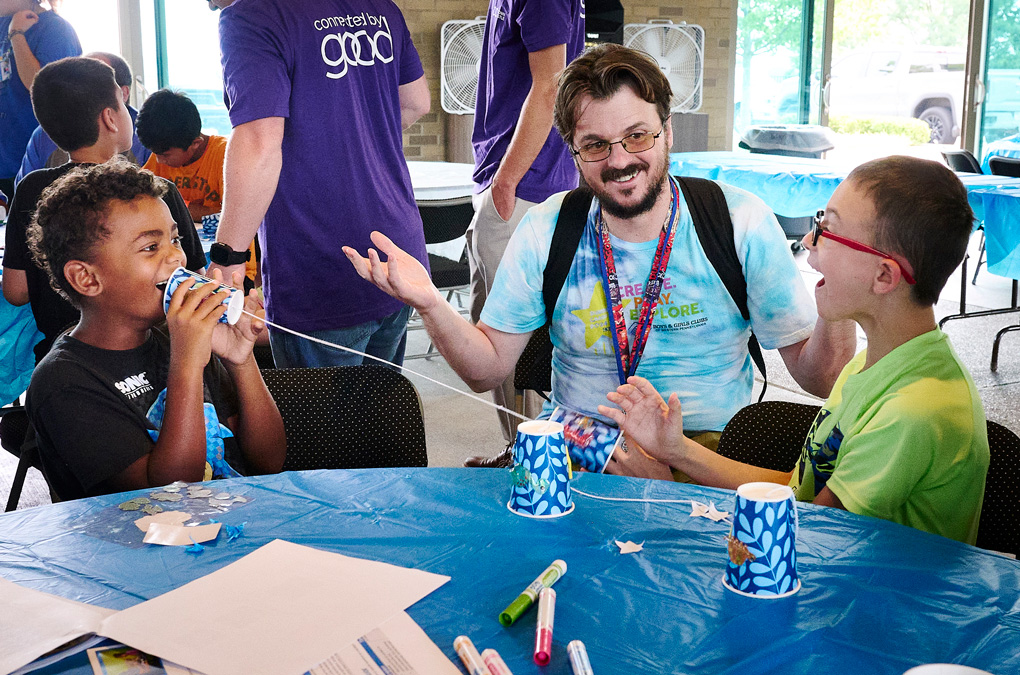
6 Ways to Help Your Child Prepare for a STEM Career
Is your child a budding scientist or engineer? Do they want to know how things work, or get excited to examine bugs outside? Maybe your teen is obsessed with coding or web development.
Great news: these are all signs of an interest in STEM (Science, Technology, Engineering and Mathematics), one of the fastest growing career paths in the U.S. By 2030, the economy is expected to add about 1.4 million STEM jobs — twice the growth rate of the projected economy overall. And STEM jobs pay about twice the median wage.
For parents, it can be daunting to know how best to encourage your child’s interest in STEM when there’s so much advice out there. Do you sign your kid up for robotics club or make sure they’re taking the right classes at school?
Read on for some practical ways you can help your child prepare for a successful STEM career.

6 Ways to Help Your Child Have a Future in STEM
Make stem exciting and accessible..
“The most important predictor of success in STEM fields is engagement and excitement outside of school for STEM learning,” says Susan Ciavolino, Director of Youth Programs and Innovation at Boys & Girls Clubs of America.
Boys & Girls Club programming encourages young people to apply STEM principles that they learn in school. In fact, according BGCA’s annual survey of youth , 81% of young people are curious to learn more about science, computers and technology, and 70% get excited about science.
There are so many ways parents can work STEM learning into everyday life:
- Explore chemistry through cooking and baking
- Learn about biology and ecology in your backyard garden or by going on a nature walk
- Estimate the final bill and calculate discounts while grocery shopping
- Take a toy apart and put it back together
- Encourage your child to help with problem-solving, such as fixing a bike or measuring a wall to hang pictures
Know that STEM careers are diverse.
Not every STEM career requires a college education. In fact, nearly half of all high-tech positions are held by employees without a bachelor’s degree . Many of these careers start with on-the-job training. As you gain more experience, your employer may also help fund additional training or education.
Help your child build their foundational knowledge at school.
Most jobs in STEM require understanding math, physics and chemistry — even roles that don’t require a 4-year college degree. For example, there are several paths to becoming a registered nurse, one of the fastest growing STEM careers, whether it’s an associate’s degree or a bachelor’s degree. But those seeking to be an RN must still take courses in anatomy, chemistry and microbiology.
Make sure your child is enrolled in STEM classes to give them a foundation of knowledge they can build on throughout their life. If your child is interested in a career that requires college, medical school or more, make sure they are enrolled in advanced courses— AP Math and Science, IB, Dual Enrollment or honors classes, depending on what your school offers.
“Talk to your child’s school about math tracks early. Taking Algebra 1 in junior high will make a difference and keep options open later,” said Phil West, Head of Corporate Communications for Crown Castle. West began his career as a NASA engineer and has spoken to teachers around the U.S. on how math and science are used in the space program.

Encourage your child’s STEM interests outside of school.
Afterschool programs in general can be an excellent way for kids and teens to pursue their STEM interests in a more structured environment. They can also allow young people to dig deeper in the area of STEM they’re most excited about. For example, if your child is interested in software engineering, a coding or robotics club allows them to get hands-on skills and experience in that STEM field. If your school doesn’t offer a specific club, encourage your child to start one! This will allow them to pursue something they’re passionate about while building valuable leadership skills .
Find a role model or mentor for your teen.
For many young people, role models ignite their future aspirations, and seeing people in STEM careers who look like them is especially important for girls and children of color. Research scientists, engineers, software developers or other individuals working in STEM and introduce these role models to your child. You can also connect your teen to a mentor who can help them understand what daily life in a STEM career looks like, and give advice on what actions they can take now. Mentors can also connect youth to research opportunities, afterschool clubs, summer camps and more to explore their interest in STEM.
Boost kids’ excitement for STEM with competitions.
There are so many STEM-related competitions for young people! All of them can be invaluable opportunities for kids to flex their knowledge, have fun with peers and gain confidence in their understanding and application of STEM principles.
For teens interested in a STEM career path that requires a college degree, like a doctor or biomedical engineer, national competitions like the Physics Bowl, National Science Bowl or American Mathematics Contest are highly recommended.
With STEM jobs growing faster than others in the U.S., providing youth with opportunities to nurture STEM skills and interests is critical to their life and workforce readiness.
Crown Castle has partnered with over 60 Boys & Girls Clubs across the country by investing in STEM programs for youth and volunteer opportunities for staff. During the summer, Crown Castle employees visited Clubs to do hands-on STEM activities with the Club members.
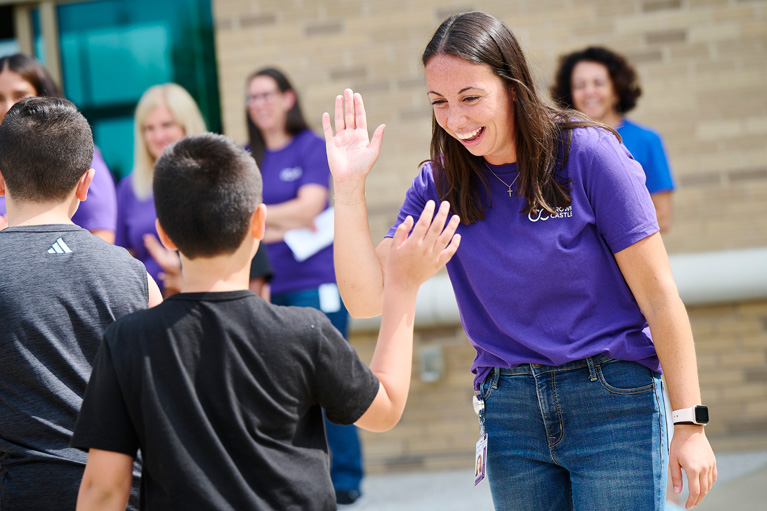
“It’s so great to see kids light up with interest in STEM. As they explore more, they build their own STEM confidence, which will open their eyes to careers – and ways they can leave their mark on the world – down the road,” said West.
Together, Boys & Girls Clubs of America and Crown Castle are preparing more young people with the skillsets and experiences to thrive in 21st-Century STEM careers.
Great Futures in STEM Start Here
Through afterschool programs at Boys & Girls Clubs, kids and teens can explore their STEM interests, develop essential job skills and apply their skills to real-world experiences. Find a Club near you to help set the stage for your child’s success in college, career and life.
STAY INFORMED WITH NEWS & UPDATES
- Maykop Tourism
- Maykop Hotels
- Maykop Bed and Breakfast
- Flights to Maykop
- Maykop Restaurants
- Things to Do in Maykop
- Maykop Travel Forum
- Maykop Photos
- All Maykop Hotels
- Maykop Hotel Deals
- Maykop Campgrounds
- Maykop Hostels
- 5-stars Hotels in Maykop
- 3-stars Hotels in Maykop
- Hotels near Maykop Park
- Hotels near Adygea Republican Museum of Local Lore
- Hotels near Maykop Cathedral Mosque
- Hotels near State Museum of Oriental Art
- Hotels near Monument to Saint Nicholas
- Hotels near Adygea Art Gallery
- Hotels near Zolotaya Kladovaya Asi Yeutykh
- Hotels near Memorial to the Soldiers of the 131st Maykop Separate Motorized Rifle Troop
- Hotels near Church of Saint George
- Hotels near The Building of the Railway Station Maikop
- Hotels near Konopli Museum
- Hotels near Monument to Shora Nogmov
- Hotels near Monument to M. S. Shovgenov
- Hotels near Sculptural Composition "Shoe".
- All Maykop Restaurants
- Restaurants near Maykop City Hotel
- Restaurants near Biba Hotel
- Restaurants near Maykop Hotel
- Restaurants near Hatti Loft Hotel
- Restaurants near Versal Hotel
- Restaurants near Siyaniye
- Restaurants near Health Resort Lago-Naki
- Restaurants near Lago-Naki Camp Site
- Restaurants near Zikhiya
- Restaurants near Grand Hotel & Spa Maykop
- Restaurants near Adygea Republican Museum of Local Lore
- Restaurants near State Museum of Oriental Art
- Restaurants near Maykop Cathedral Mosque
- Restaurants near Maykop Park
- Restaurants near Vodnaya Rivyera
- Restaurants near Pushkin State Drama Theater
- Restaurants near St. Michael's Monastery
- Restaurants near Psygups
- Restaurants near Kedrovy bor
Restaurants near Maykop Station
- Restaurants near Sitsiliya
- Things to Do
- Restaurants
- Vacation Rentals
- Travel Stories
- Rental Cars
- Add a Place
- Travel Forum
- Travelers' Choice
- Help Center
Friday, June 20, 2014
Maykop - the capital of the republic of adygea.


- Universities

Search Edarabia
- United Kingdom
- United States
- Saudi Arabia
- MBA Rankings
- More Countries
- Special Education Schools
- After School Activities
- Educational Suppliers
- Language Schools
- Music & Performing Arts
- Training Centers
- Education News
- Recruitment Agencies
- Student Scholarships
- Login / Register
Adyghe State University

- Founded: 1940
- Tel: +78772570273 Show Number
Adyghe State University is a leading educational and research center of the Republic of Adygea. ASU history dates back to 1940, when the city of Maikop, opened Teachers' Institute, which became in 1952 Adyghe Pedagogical Institute, and in 1993 - State University. The opening of the university marked the beginning of higher education in Adygea, created the necessary conditions for the emergence of other educational and research institutions in the region.
Today it is one of the leading universities in the South of Russia, which has well-known scientific schools, highly qualified teaching staff, modern technology and information base. As a recognized educational, scientific and cultural center of the region, the ASU continues to develop dynamically and actively participates in the formation of a competitive "knowledge economy". In October 2015 ASU noted the important date - the 75th anniversary of its founding. ASU went a long way, rich in significant dates and events, and the 75-year anniversary was a holiday for many generations of teachers, staff and students. Over the years, the walls of the university left tens of thousands of experts, including prominent scientists, educators, writers, public figures. University became a real source of skilled workers for domestic and economic complex of the Republic of Adygea and other areas of southern Russia. Its graduates make up a scientific, educational, political, economic and cultural elite of the region.
All who are motivated to increase their knowledge and professional competence, ASU provides training in various educational paths and levels - from preparing to enter the university to obtain academic degrees and academic titles. Professional knowledge and practical experience of university teachers and employees, respect for the classical traditions of the institution, the modern scientific and technical base and one of the top research libraries in Southern Russia provide a high level of training and allow the university to make a worthy contribution to the development of Adygea.
The university has over 11,000 students from Adygeya, other Russian regions and foreign countries on a wide range of vocational training programs. The ASU licenses more than 100 areas of training in higher (undergraduate, graduate, specialty), secondary vocational and further education. Teaching and research university structure includes: 2 Institute (Institute of Arts, the Institute of Physical Culture and Judo), 12 faculties (Mathematics and Computer Science, Engineering Physics, natural science, history, philology, Adyghe philology and culture, foreign languages, law, economics, Teachers, faculty of social technologies and tourism, international), humanitarian and technical College, research Institute of complex problems, research and development centers, laboratories, museums, National Space Center services, student business incubator, vocational training center. It operates a branch in Belorechensk Krasnodar Territory. At ASU successfully working Republican natural-mathematical school. The University has developed social infrastructure, a sanatorium, the Palace of Sports, holiday villages and other units of cultural and recreational orientation.
A special role in the innovation economy development tasks given to high school science. For 75-year history of the university have developed and are actively working dozens of schools of thought, many of which are known not only in Russia but also abroad. The main objectives of the ASP at the present stage are: the establishment of a modern scientific infrastructure and equipment base; increasing the productivity of scientific research; the development of innovation; academic mobility. The focus is on strengthening the personnel component, improving the structure of university research, expansion of the Research Institute of complex problems and business incubator, the creation of small innovative enterprises and the development of basic research in the natural, philosophical, historical, sociological and political science.
ASU publishes 12 scientific journals and collections of scientific works 9. Since 1998, published by the scientific journal "Bulletin of the Adygeya State University," included in the list of leading peer-reviewed scientific journals and publications, recommended HAC RF for publishing papers competitors of scientific degrees of doctor and candidate of sciences. The journal is included in Ulrich's Periodicals Directory international database.
The university has a strong tradition of spiritual, moral, aesthetic, civic and patriotic education of students and labor. Talents of students are disclosed in numerous creative collectives of the Cultural Center ASU: theater studio, ensembles of folk and pop dance, vocal and instrumental ensemble, etc. Folk Ensemble "Nart ASU" Adyghe dance twice won the International Festival "Almond blossom" in Italy, repeatedly became the winner of the Mediterranean Folk Festival in Turkey on a regular basis participated in the cultural program of the Olympic Games in Sochi. Student Musical Theater "Art Riton", annually presenting to the audience the new musicals,.
The university created the necessary conditions for recreational activities and recreational activities: operating sanatorium "Health", there are two educational and recreational base on the Black Sea coast and the educational and health complex "Mountain Legend", located in a beautiful mountain area. Adygei University has strong positions in the scientific and educational community of the Southern Federal District and Russia as a whole and makes every effort to conquer new frontiers, to achieve the highest rating, and always be at the epicenter of scientific progress and the global public interest.
- Leadership: Rashid Dumalichevich Hunagov (Rector)
- Gender: Mixed (Co-education)
- Number of Students: 11000
- Postal Code: 385000
- Visit Website
Studied or Worked here? Share Your Review
Cancel reply.
Your email address will not be published. Required fields are marked *
Please do not post:
- Aggressive or discriminatory language
- Profanities (of any kind)
- Trade secrets or confidential information
Thank you once again for doing your part to keep Edarabia the most trusted education source.
Trending Articles


IMAGES
VIDEO
COMMENTS
Let me just say that special education teachers are pros at modifying stuff… and accommodating stuff. Everything really. We are kind of like lesson planning superheroes when it comes to taking a set general ed curriculum on a 4th grade level and morphing it to fit the needs of a student on a kindergarten level… and another student on a first grade level… and four more students on a ...
The STEM craze has swept the education world within the past few years. Students are becoming little engineers in their classrooms, putting together crazy cool buildings and systems, but what about our special education students? With fine motor issues, as well as difficulty with more "open-ended" activities, how can we provide STEM opportunities to our
1. Sticky-note matching numbers. A Post-It Number Match Game is a great way to teach basic math skills using a method that also provides the kinetic stimulation that many learners with disabilities need in their lessons. All you need for this activity are some markers, sticky notes, painter's tape and butcher paper.
STEM activities require students to use their prior knowledge while also using higher-order thinking to solve the problem. How STEM Education Can Help Children with Special Needs. STEM education is an ongoing opportunity for students to use problem-solving skills and higher-level thinking in a fun way. Because most of the careers in the future ...
1. Visual support. As with most activities in classrooms that serve students with significant challenges, there is a heavy emphasis on adding visual structure as a main support. This can be challenging when it comes to using a main-streamed regular ed activity like a STEM activity. But, it can be done.
Many students with special needs actually lean toward STEM fields in higher numbers than other students. According to a STEM 3 Academy report, about 34% of kids with autism spectrum disorders gravitate to courses and careers involving science, technology, engineering and math. That contrasts with 20% of students in the general school population.
Science, technology, engineering, and mathematics (STEM) help build the foundation for student learning. More than simply learning each of its lettered subjects, STEM instruction helps students develop critical thinking skills and student-centered learning experiences. Understanding STEM concepts can be one of the biggest indicators of student success in the classroom and after school.
As we work on making our own resources more accessible and creating materials to support, engage, and inspire students with disabilities, we hope to open new conversations with educators, parents, and organizations about inclusivity in STEM education. In the Team Roles and STEM Inclusion post, we share one strategy educators can use in STEM ...
S TEMD.org: This scholarship offers $1,000 to selected students with disabilities who are pursuing STEM education. Microsoft Disability Scholarship Fund: This scholarship offers $5,000 to selected students with disabilities who are pursuing an education in technology. An individual can win up to four consecutive years.
Explore the potential of computer science. From an Hour of Code to designing websites, students learn skills that are crucial in today's digital world. And Beyond. The learning continues, with ideas for the rest of the year. Spring into April with Earth Day, where students can engage in activities from tree planting to learning about ...
This STEM Activities and MakerSpace BUNDLE for PreK, Kindergarten and 1st Grade was created to encourage little ones, pre-readers, and students with special needs to think creatively, work to the best of their ability, complete their work on time, and build using the engineering design process. This.
My STEM Adventure App provides the opportunity for young children to explore the world of STEM both indoors and outdoors and create a storybook that details their investigation. All children have the capacity to engage in activities that teach them about science, technology, engineering, and mathematics (STEM), not just older students.
This approach helps bridge the gap between theory and practice, making STEM subjects more relevant and relatable to students. Through hands-on activities and experiments, students with special needs gain a deeper understanding of scientific principles, enhance problem-solving skills, and foster a sense of curiosity and discovery. Moreover ...
STEM stands for Science, Technology, Engineering, and Math. STEM programs are designed to teach students 21st-century employment skills in an interactive and fun way. The STEM curriculum challenges students to think critically. With our project-based approach to learning, students gain real-world experiences and knowledge for their future.
This book makes math fun and engaging by presenting arithmetic concepts through illustration. Simple Ways to Help a Child With Autism Master Math — This article offers tips and tricks on promoting math education for students with autism, especially at an early age. These are just some of the exciting STEM areas that can provoke great interest ...
STEM education goes beyond imparting knowledge; it's about instilling confidence. At Alpha School, we've seen firsthand how STEM can transform students' self-perception and belief in their abilities. When students with special needs engage in STEM activities, they discover new skills and interests, which fuels their confidence and self-esteem.
Spring STEM Activities: M is for Mathematics. Geometric Shape Flowers. Fun-A-Day shows us a great activity with felt flowers (surely can be completed with construction paper as well). Use geometric shapes to create a pattern. Fun and creative play with geometry and would make a great gift for grandparents.
STEM activities often involve problem-solving, logical reasoning, and critical thinking. For students with cognitive challenges, these activities can be therapeutic. ... In a mixed classroom with both mainstream and special education students, STEM projects can serve as a platform for peer learning and mutual understanding. Such collaborative ...
On April 21 st, the U.S. Department of Education came together with the White House and numerous public and private partners to announce our shared commitment to improving Science, Technology, Engineering, and Math (STEM) education in early learning (Preschool-3 rd Grade). Early engagement in STEM is critical for our youngest learners because opportunity gaps in STEM can begin prior to ...
Here are three (3) ways to implement STEM activities that will help special needs students stay engaged in lessons: Use of Visual Supports: Incorporating pictures, diagrams, and videos to help students understand concepts. Tactile Learning Materials: Using textured materials, building blocks, and beads to make abstract concepts more concrete.
The essence of STEM education is not about how to involve specific disciplines, but how to provide integrated and rich learning experiences to foster students' key competency and literacy, added Li. 4.2.2 Why promote STEM education. Lay foundation for students' future life and development. Li believed that the ultimate goal of education ...
Know that STEM careers are diverse. Not every STEM career requires a college education. In fact, nearly half of all high-tech positions are held by employees without a bachelor's degree.Many of these careers start with on-the-job training. As you gain more experience, your employer may also help fund additional training or education.
A Biden-Harris initiative launched in December 2022 called You Belong in STEM offers support of more than US$120 billion for K-12 STEM education until the year 2025.
Restaurants near Maykop Station, Maykop on Tripadvisor: Find traveler reviews and candid photos of dining near Maykop Station in Maykop, Republic of Adygea.
The climate is temperate humid, the average minimum temperature in December - 4.9 C, the average maximum July 28.9 C. The height above sea level of 210-230 meters.
Departments of education «Образования и науки Республики» at Republic of Adygea, Maykop, 2nd Krylova Street. Get directions in Yandex Maps.
Adyghe State University is a leading educational and research center of the Republic of Adygea. ASU history dates back to 1940, when the city of Maikop, opened Teachers' Institute, which became in 1952 Adyghe Pedagogical Institute, and in 1993 - State University. The opening of the university marked the beginning of higher education in Adygea ...